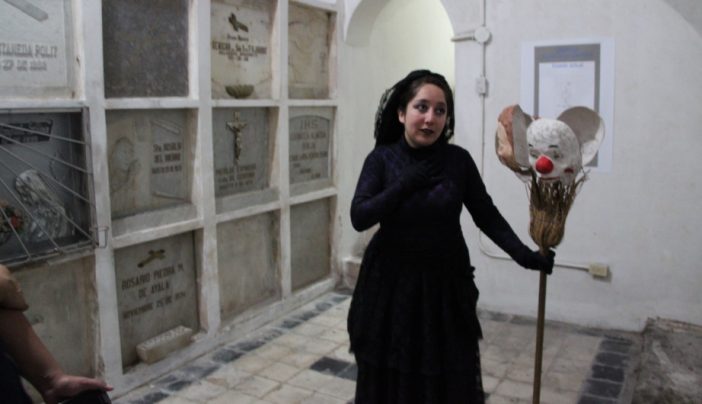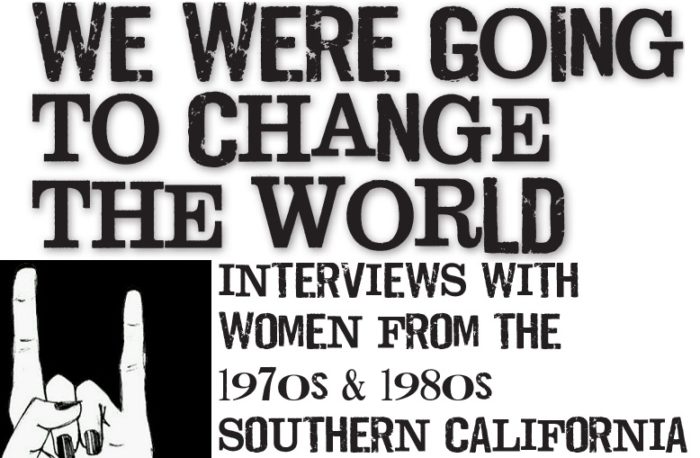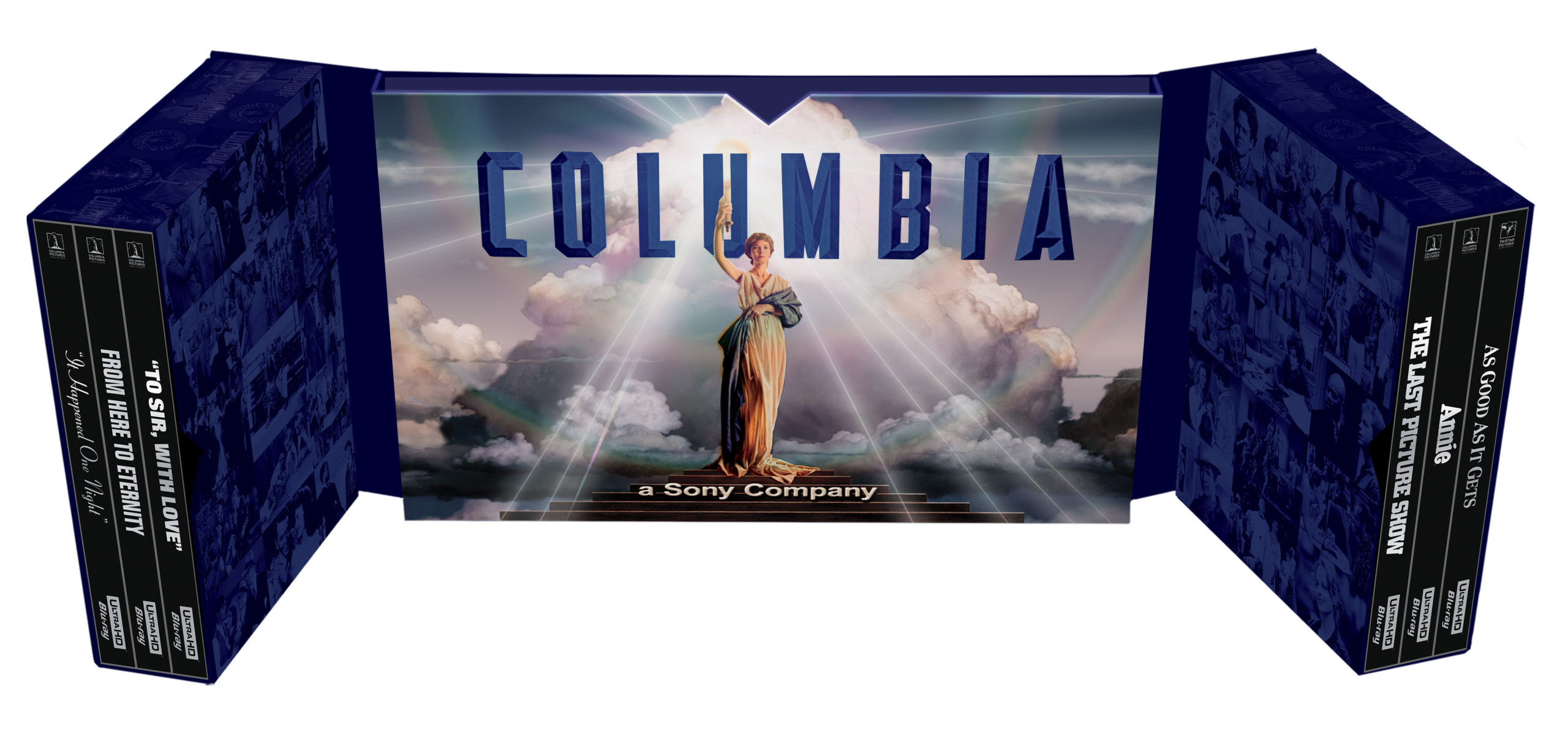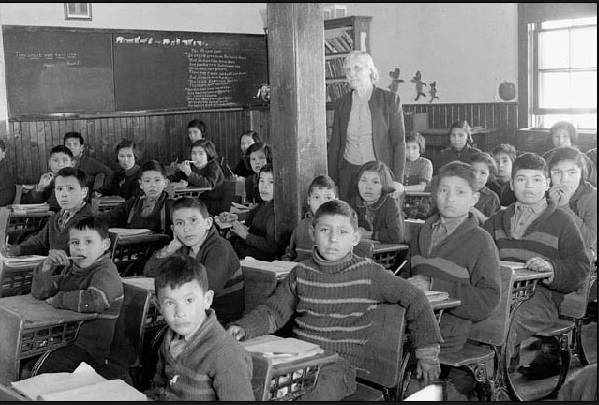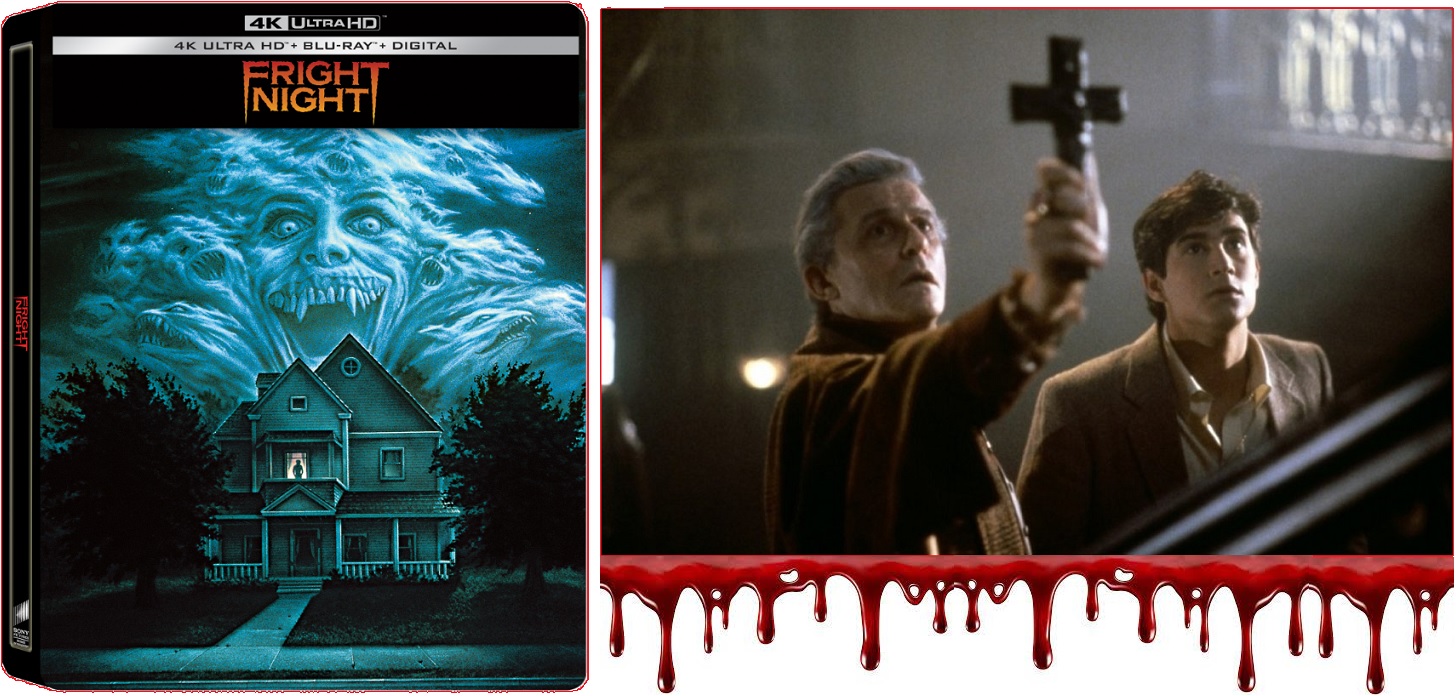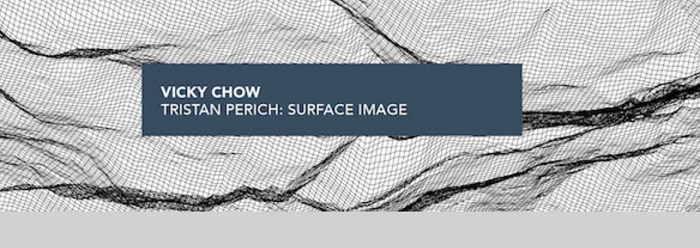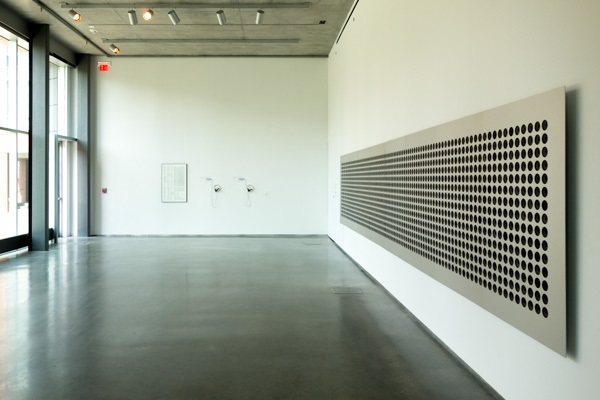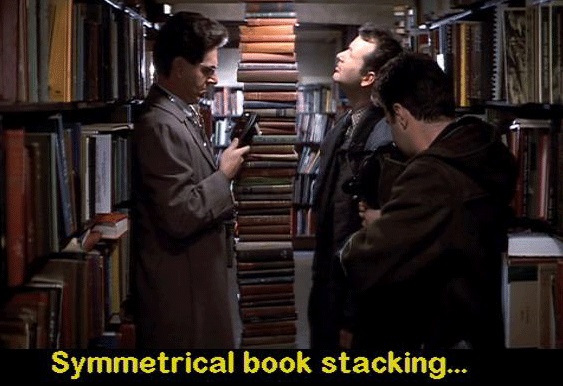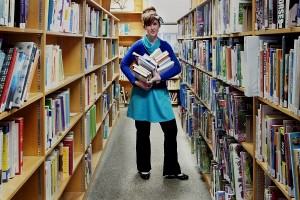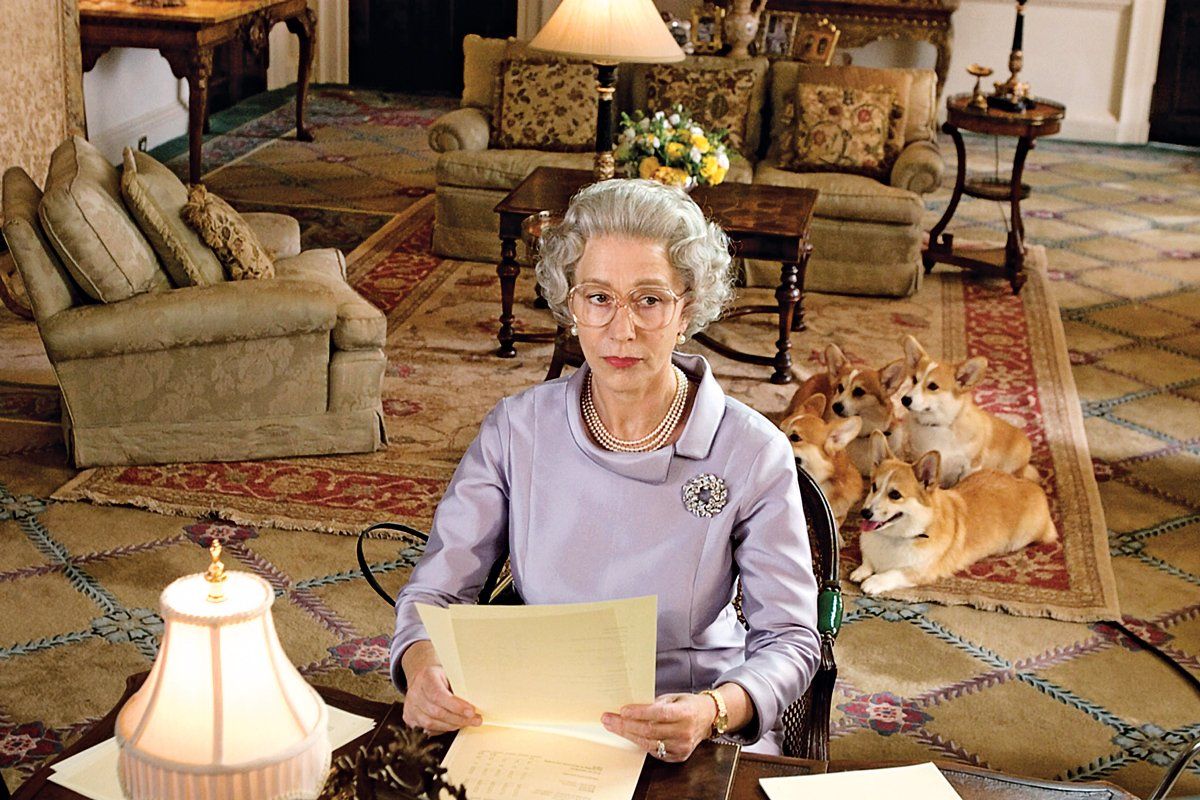Many non-native plants can happily survive in other regions of the world, which has given gardeners more choice than ever before. However, native flowers and plants can summarize the landscape of a nation, while communicating the identity of a country.
Category Archives: Culture
Exploring Growing Popularity Of Party Buses
When it comes to parties and get-togethers, one of the hottest new trends is the party bus. Surprisingly, this trend has grown in almost all age ranges. The appeal is understandable as a party bus allows a group of people to celebrate in one place while also traveling to one or more destinations. Why exactly has the party bus trend taken off? Let’s look at some of the primary reasons why they’re so popular today.
Convenience
Unlike having to hire a taxi or other ride service when people want to go out with their friends, a party bus is an inclusive party. After hiring the bus, they can enjoy drinks on the bus while going to and from their desired location. Some party buses may also come with their own entertainment such as a minibar, TV, dance floor, and more.
Cost Effective
If you’re trying to get a group of people together but don’t want to break the bank, a party bus is probably the way to go. Choosing a party bus Toronto based is more affordable than ever. There are usually several packages to choose from, and for an inclusive fee, you can enjoy a wide range of entertainment options. The party bus is usually a more cost-effective option than going to a restaurant or bar with a large group of people. People also have the advantage of knowing what they’re paying for instead of having to worry about extra costs.

High Capacity Buses
Although you may not need one of the larger buses, some party buses can accommodate up to a whopping 454 passengers. Not only does this have an economic advantage, people can easily party with a larger group. On the other hand, finding a restaurant or other space that seats this number of people is virtually impossible. However, many people are finding that a bus meets their needs for large or medium sized groups.
New and Exciting
When it comes to partying, everyone has been to a bar or club before. However, a party bus offers something new and interesting. From the fun decor to the added interest of traveling while partying, this popular new trend is an innovation. Chances are, party buses will only continue to become more popular over time.

Multi-Purpose Use
Another thing about party buses is that they’re not designed for one specific event. While you may think about them for bachelorette parties or birthday get-togethers, they’re appropriate for any number of events. From Christmas office parties to anniversaries and even wedding parties, you can find a number of reasons to rent a bus. This is also why people of all ages are choosing party buses.
There is no doubt that party buses are changing the industry and becoming more popular every day. They are perfect for any number of reasons, and who knows, maybe you could consider renting one for your next event. If you’ve been one of the many people who has partied in one of these buses, then you already know what the hype is about.
Featured image- Majestic Limos Toronto Party Bus interior.
Day Of The Dead Is Unique Ecuador Halloween
The capital, also known as the Middle of the World, not only has the largest and best preserved historic center in America, but it also has one of the richest cultures in the continent and Day of the Dead or Dia de los Difuntos is no exception.
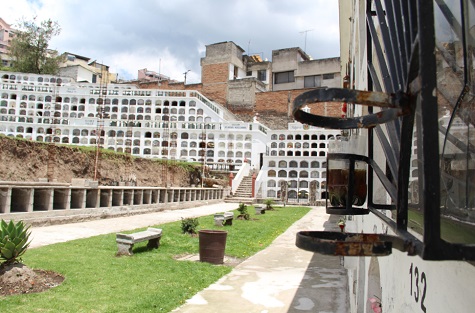 Every November 2, cemeteries are decorated with flowers, freshly painted crosses, pictures and cards to celebrate the Day of the Dead in Quito.
Every November 2, cemeteries are decorated with flowers, freshly painted crosses, pictures and cards to celebrate the Day of the Dead in Quito.
Early in the morning, thousands of Ecuadorians remember their family members and friends who’ve passed away with prayers, vigils and songs. This popular holiday merges hundreds of years of traditions in a fusion of Catholic and indigenous rites, where faith and religion come to life in an act of profound significance.
The oldest towns in Ecuador have been celebrating the dead since before the arrival of the Spaniards, but with Christianity, the tradition was adapted to the Catholic calendar. Today, the streets near the cemeteries fill with locals selling flowers and prayer cards and food trucks providing typical cuisine such as colada morada and guaguas de pan, which represent the religious syncretism and culinary fusion of the holiday. At the Calderon Cemetery, about 30 minutes from Quito, indigenous communities visit the graves of their loved ones and share the favorite food of the person who passed away as a way to honor them and communicate with them, with the belief that the deceased live a similar life than the one they lived while alive.
 The preparation of these dishes also serve as a reason for the entire family to get together. Colada morada, one of the typical beverages for the Day of the Dead, is a drink of indigenous origin and one of the most traditional delicacies of Quito’s cuisine. Prepared with a base of black corn, blueberries, blackberries, pineapple, orange and other fruits and herbs, colada morada is accompanied by the traditional guagua de pan, sweet breads shaped into baby-like figures made with wheat flour and, in some places, with cornmeal from grains from the Ecuadorian Andes.
The preparation of these dishes also serve as a reason for the entire family to get together. Colada morada, one of the typical beverages for the Day of the Dead, is a drink of indigenous origin and one of the most traditional delicacies of Quito’s cuisine. Prepared with a base of black corn, blueberries, blackberries, pineapple, orange and other fruits and herbs, colada morada is accompanied by the traditional guagua de pan, sweet breads shaped into baby-like figures made with wheat flour and, in some places, with cornmeal from grains from the Ecuadorian Andes.
The guaguas de pan are reminiscent of the dead, especially children (hence the name guagua, which means child in Quechua). Its origin dates back to the nineteenth century and today are normally filled with guava, figs, chocolate, raisins and custard or tree tomato. For the Silo, Luciana Soula.
Women Of 1970s & 1980s Punk Rock
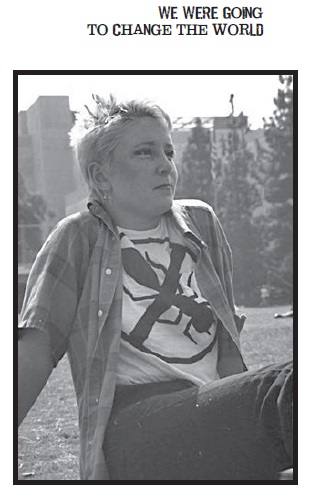
The punk rock scene of the 1970s and ’80s in Southern California is widely acknowledged as one of the most vibrant and creative periods in rock and roll.
Over the years, many books have come out exploring this explosive time in music and culture, but none have exclusively focused on the vitality and influence of the women who played such a crucial role in this incredibly dynamic movement.
“Almost a decade ago- IN THE SUMMER OF 2012, I attended an oral history workshop by the social justice organization Voice of Witness. I’m a librarian and professor at Santa Ana College and I participated in the workshop to discover projects I could do with students. I ended up imagining something entirely different: interviewing other women like me, now in our middle or later years, who grew up in the punk rock scene in Southern California. Did punk rock influence the rest of their lives? What attracted them to punk rock and how did they get involved? What was it like being a woman in the scene?
What you can now hold in your hands is the final result of a project that took several years and countless hours to complete.
How did I do it? I created a flyer about the project. I posted the flyer a few places around Orange County and Los Angeles and on Facebook. Women started contacting me to participate. I wrote up a list of questions and bought two digital recorders. I emailed some women directly and asked if they would be willing to participate. Then I started calling women and meeting them, mostly in their homes. A friend called it “punk rock anthropology.” I had no idea what an amazing experience this would be.“
Stacy Russo has created a unique book about the punk rock era, focusing on the women who were such a huge part of it. We Were Going to Change the World: Interviews with Women From the 1970s & 1980s Southern California Punk Rock Scene (Santa Monica Press/2017) captures the stories of women who were active in the punk rock scene in Southern California during this historic time, adding an important voice to the cultural and musical record. Recommended reading. For the Silo, Trina Kaye.
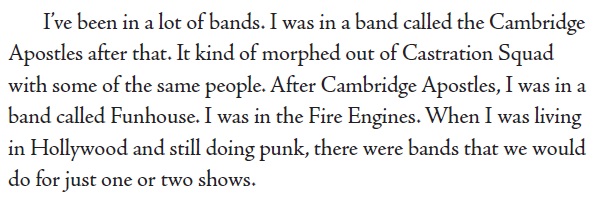
Gilda Garza Pushing Boundaries Between Emotion & Art
Venice, ITALY – Known as “the most influential artist in Mexico,” Gilda Garza is an internationally recognized painter constantly pushing the boundaries between emotion and art. This award-winning Mexico native prepares to make history with a moving collaborative collection by sculptural artist Mario Furlan in a live exhibition at New Murano, Atelier Muranese.

“I have always put my entire heart and soul into my work,” shares Garza. “I’m extremely grateful to create real world impact through art – the thing I love most. It is a true honor to see my influence and efforts reflected in a once-in-a-lifetime glass rendition by the historic New Murano Gallery in Venice.”
Widely regarded as the master of Murano Sculptural Art, Mario Furlan will transform Garza’s epic pieces into three-dimensional glass structures before a live audience of exhibition attendees. The finished works will then display at the more than 1,500-year old Atelier Muranese studio. Through the presentation of glass masters, fine art, conceptual art, and collectible design, the Venetian gallery supports the creative vision of Murano/Venetian artisan culture. The “Glass Queen” exhibition serves their ongoing mission to expose the creative art process, from interpretation to object, using centuries-old skills of muranese high manufacturing.
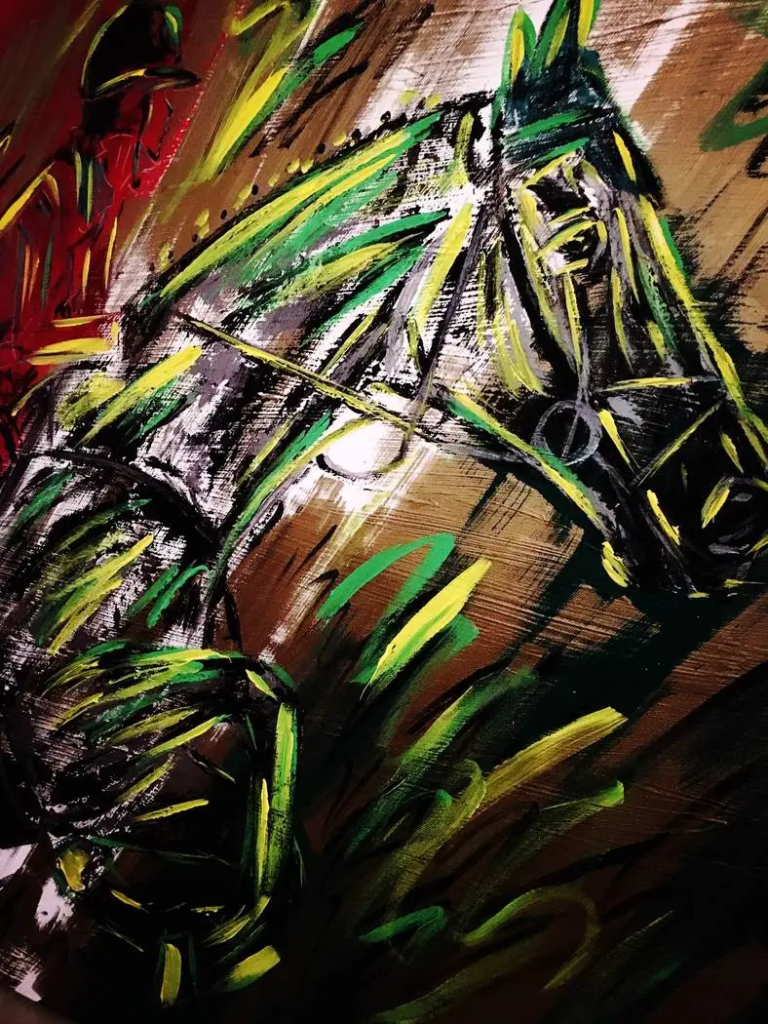
In the US, Garza’s work can also be seen in an exclusive jewelry collection at Jason of Beverly Hills, Roberto Cavalli Haute Couture, and the House of Bijan on Rodeo Drive. Garza has been officially recognized for her cultural contributions by the Senate of the Republic constitutionally Chamber of Senators of the Honorable Congress of the Union in Mexico City.

She is also acclaimed for donating $80,000 USD/ $109,800 CAD from the sale of a Vice President Kamala Harris-inspired painting to the World Woman Foundation, committed to empowering one million woman by 2030. Gilda Garza is famously recognized as the first artist to have an art exhibition on Las Vegas strip. Since then, she has showcased various collections in the iconic Caesars Palace Hotel.

Featured image- Playboy magazine chose Gilda’s art for the cover for the first art special edition.
Six Landmark Films from the Columbia Pictures Library Debut on 4K
Debut on 4K Ultra HD For the First Time October 25th
IT HAPPENED ONE NIGHT ~ FROM HERE TO ETERNITY
TO SIR, WITH LOVE ~ THE LAST PICTURE SHOW ~ ANNIE
AS GOOD AS IT GETS
Exclusively Available on 4K Disc in this Limited Edition Set,
Includes an 80-Page Hardbound Book on the History & Impact of the Films
and Over 35 Hours of New and Archival Special Features
TORONTO, ONT. (October, 2022) – Continuing the fan-favourite and award-winning series, Sony Pictures Home Entertainment is proud to debut six more acclaimed and iconic films from its library on 4K Ultra HD disc for the first time ever, exclusively within the COLUMBIA CLASSICS 4K ULTRA HD COLLECTION VOLUME 3, available October 25. This must-own set includes films that have resonated and endured, with stars and stories that have reverberated through cinema history: IT HAPPENED ONE NIGHT, FROM HERE TO ETERNITY, TO SIR, WITH LOVE, THE LAST PICTURE SHOW, ANNIE and AS GOOD AS IT GETS. Each film is presented in 4K resolution with Dolby Vision High Dynamic Range, and four of the films have all-new Dolby Atmos mixes.
The six films in the COLUMBIA CLASSICS 4K ULTRA HD COLLECTION VOLUME 3 are only available on 4K Ultra HD disc within this special limited edition collector’s set. Included with the collection is a gorgeous hardbound 80-page book, featuring in-depth sections about the making of each film within the set via six all-new incisive essays from renowned writers—including a special exclusive essay from award-winning writer/director James L. Brooks on his 1997 classic, AS GOOD AS IT GETS!
The set also includes a variety of rare related features and TV episodes, expanding the worlds of several of the included films—some of which haven’t been available in decades! From a 1932 cinematic incarnation of Annie to a nearly five-hour 1979 TV miniseries adaptation of FROM HERE TO ETERNITY—and much more!—these supplemental additions round out this must-own gift set, perfectly timed for holiday gift-giving.

Clark Gable and Claudette Colbert team up for laughs as mismatched lovers in this 1934 screwball comedy classic. Spoiled Ellie Andrews (Colbert) escapes from her millionaire father (Walter Connolly), who wants to stop her from marrying a worthless playboy. En route to New York, Ellie gets involved with an out-of-work newsman, Peter Warne (Gable). When their bus breaks down, the bickering couple set off on a madcap hitchhiking expedition. Complications fly when the runaway heiress and brash reporter fall in love. Directed by Frank Capra, IT HAPPENED ONE NIGHT was the first movie to be honoured with all five major Oscars®: Best Picture, Best Actor, Best Actress, Best Director, and Best Screenplay.
IT HAPPENED ONE NIGHT Disc Breakdown
· 4K Ultra HD Includes:
· Feature presented in 4K resolution with Dolby Vision
· Original Mono DTS-HD Master Audio
· Special Feature:
o NEW: YOU CAN’T RUN AWAY FROM IT – 1956 remake of IT HAPPENED ONE NIGHT, starring June Allyson and Jack Lemmon. Newly remastered in HD!
§ Blu-ray Includes:
· Feature presented in high definition, sourced from the 4K master
· Original Mono DTS-HD Master Audio
· Special Features:
o Audio Commentary featuring Frank Capra, Jr.
o Frank Capra, Jr. Remembers It Happened One Night Featurette
o Screwball Comedy? Featurette
o Original Live Radio Broadcast
o Advertising Materials
o Theatrical Trailer
IT HAPPENED ONE NIGHT has a run time of approximately 105 minutes and is rated PG.

Synopsis:
FROM HERE TO ETERNITY Disc Breakdown
· 4K Ultra HD Includes:
· Feature presented in 4K resolution with Dolby Vision
· Dolby Atmos English audio
· 5.1 DTS-HD Master Audio
· Original Mono DTS-HD Master Audio
· Special Features:
o NEW: Strength and Sacrifice: The Making of From Here to Eternity
o NEW: Eternal History Revisited Featurettes
o NEW: FROM HERE TO ETERNITY 1980 TV Pilot – the TV pilot starring William Devane and Barbara Hershey, presented in SD!*
o Theatrical Trailers
· Feature Blu-ray Includes:
· Feature presented in high definition
· 5.1 DTS-HD Master Audio
· Dolby Digital Mono
· Special Features:
o Eternal History: Graphics-in-Picture Track
o Audio Commentary featuring Tim Zinnemann and Alvin Sargent
o Making of From Here to Eternity
o Excerpt from “Fred Zinnemann – As I See It”
FROM HERE TO ETERNITY has a run time of approximately 118 minutes and is rated PG.
TO SIR, WITH LOVE
Synopsis:
TO SIR, WITH LOVE Disc Breakdown
· 4K Ultra HD Includes:
· Feature presented in 4K resolution with Dolby Vision, restored from the original camera negative
· Dolby Atmos English audio
· 5.1 DTS-HD Master Audio
· Original Mono DTS-HD Master Audio
· Special Features:
o NEW: A Tribute to Sidney Poitier
o NEW: TO SIR, WITH LOVE 1974 TV Pilot – Hari Rhodes stars in this rare TV adaptation of the 1967 classic film, presented in HD!
· Blu-ray Includes:
· Feature presented in high definition, sourced from the 4K master
· 5.1 DTS-HD Master Audio
· Original Mono DTS-HD Master Audio
· Special Features:
o Audio Commentary featuring Actor Judy Geeson and Film Historians Julie Kirgo and Nick Redman
o Audio Commentary featuring Novelist E.R. Braithwaite and Author / Teacher Salome Thomas-El
o NEW: TO SIR, WITH LOVE II – the 1992 TV-movie sequel to the 1967 classic, starring Sidney Poitier and directed by Peter Bogdanovich, presented in HD!
o NEW: To Potter, With Love Featurette
o NEW: Beginnings of an Acting Career Featurette
o Those Schoolboy Days Featurette
o Look and Learn Featurette
o E.R. Braithwaite: In His Own Words Featurette
o Lulu and the B-Side Featurette
o Miniskirts, Blue Jeans and Pop Music! Featurette
o To Sidney, With Love Featurette
o Principal El: He Chose to Stay Featurette
o Theatrical Trailer
TO SIR, WITH LOVE has a run time of approximately 105 minutes and is rated PG.
Released in 1971 to critical acclaim and public controversy, THE LAST PICTURE SHOW garnered eight Academy Award® nominations, including Best Picture, and was hailed as the most important work by a young American director since Citizen Kane. A surprisingly frank, bittersweet drama of social and sexual mores in small-town Texas, the film features a talent-laden cast led by Jeff Bridges, Cybill Shepherd and Timothy Bottoms. Cloris Leachman and Ben Johnson each won Oscars® for their work in supporting roles. Featuring both director Peter Bogdanovich’s preferred 1999 Definitive Director’s Cut and the 1971 Theatrical version on 4K Ultra HD.
THE LAST PICTURE SHOW Disc Breakdown
· Director’s Cut 4K Ultra HD Includes:
· Director’s Cut presented in 4K resolution with Dolby Vision, restored from the original camera negative
· Original Mono DTS-HD Master Audio
· Theatrical Version 4K Ultra HD Includes:
· 1971 Theatrical version presented in 4K resolution with Dolby Vision, restored from the original camera negative
· Original Mono DTS-HD Master Audio
· Feature Blu-ray Includes:
· Director’s Cut presented in high definition, sourced from the 4K master
· Mono DTS-HD Master Audio
- Special Features:
o Audio Commentary featuring Director Peter Bogdanovich
o NEW: A Tribute to Peter Bogdanovich
o The Last Picture Show: A Look Back Documentary
o A Discussion with Filmmaker Peter Bogdanovich
o Location Footage
o Promotional Featurette
o Theatrical Trailers
THE LAST PICTURE SHOW has a run time of approximately 118 minutes and is rated 18A. THE LAST PICTURE SHOW: DIRECTOR’S CUT has a run time of approximately 126 minutes and is rated 18A for sexuality, nudity and language.
Synopsis:
Celebrating its 40th anniversary, ANNIE is the story of everyone’s favourite plucky, red-haired orphan! One day Annie (Aileen Quinn) is chosen to stay for a week with the famous billionaire “Daddy” Warbucks (Albert Finney). One week turns into many, and the only person standing in the way of Annie’s fun is Miss Hannigan, the tyrannical ruler of the orphanage (played to hilarious perfection by Carol Burnett). Will Miss Hannigan’s zany attempts to kidnap the irrepressible Annie succeed? Sing along with the unforgettable songs and experience this beloved musical!
ANNIE Disc Breakdown
· Feature presented in 4K resolution with Dolby Vision, restored from the original camera negative
· Dolby Atmos English audio
· 5.1 DTS-HD Master Audio
· Original 2-Channel Surround DTS-HD Master Audio
· Special Feature:
- NEW: LITTLE ORPHAN ANNIE – 1932 feature starring Mitzi Green as Annie, newly restored and presented in HD!
· Feature Blu-ray Includes:
· Feature presented in high definition, sourced from the 4K master
· 5.1 DTS-HD Master Audio
· Original 2-Channel Surround DTS-HD Master Audio
· Special Features:
- NEW: Cast Audio Commentary – featuring all-new reflections from stars Carol Burnett, Ann Reinking, Tim Curry and Roseanne Sorrentino
- NEW: Aileen Quinn: A Conversation
- NEW: Behind the Music with Charles Strouse
- NEW: Looking Back: Behind the Scenes
- Annie’s Journey to the Screen
- “Easy Street”
- “I Don’t Need Anything But You”
- Making a Finale (no audio)
- Sing-Along with Annie!
- My Hollywood Adventure with Aileen Quinn
- Musical Performance by Play: “It’s the Hard-Knock Life”
- Theatrical Trailers and TV Spots
ANNIE has a run time of approximately 127 minutes and is rated G.

Synopsis:
Jack Nicholson, Helen Hunt, Greg Kinnear and Cuba Gooding, Jr., star in James L. Brooks’ hit comedy, AS GOOD AS IT GETS, now celebrating its 25th anniversary. Nicholson gives a show-stopping Academy Award®-winning performance as Melvin Udall, an obsessive-compulsive novelist with Manhattan’s meanest mouth. But when his neighbor Simon is hospitalized, Melvin is forced to babysit Simon’s dog. And that unexpected act of kindness, along with waitress Carol Connelly (Helen Hunt, in an Academy Award®-winning performance), helps put Melvin back in the human race. Nominated for seven Academy Awards®, including Best Picture (1997).
AS GOOD AS IT GETS Disc Breakdown
· 4K Ultra HD Includes:
· Feature presented in 4K resolution with Dolby Vision, restored from the original camera negative
· Dolby Atmos English audio
· Original 5.0 DTS-HD Master Audio
· Feature Blu-ray Includes:
· Feature presented in high definition, sourced from the 4K master
· Original 5.0 DTS-HD Master Audio
· Special Features:
o Audio Commentary featuring Director James L. Brooks, Stars Jack Nicholson, Helen Hunt and Greg Kinnear, Editor Richard Marks, Producer Laurence Mark and Composer Hans Zimmer
o NEW: Deleted Scenes
- Melvin Stalls Victor with Intro from James L. Brooks
- “Kiss Her, Man!” Original Ending
o NEW: Behind the Scenes Footage
o NEW: The Making of As Good As It Gets Featurette
o NEW: Archival Theatrical EPK Soundbites
o Theatrical Trailer
AS GOOD AS IT GETS has a run time of approximately 139 minutes and is rated PG for strong language, thematic elements, nudity and a beating.
EXCLUSIVE BONUS DISC INCLUDES:
· FROM HERE TO ETERNITY – the nearly 5-hour 1979 TV miniseries starring Natalie Wood, William Devane and Peter Boyle, presented in high definition*
* Select instances of music have been removed for this presentation.
Academy Award® and Oscar® are the registered trademarks and service marks of the Academy of Motion Picture Arts and Sciences.
Sci Fi Like Devices Part Of Queen’s Park Security Update

Eight years ago at Queen’s Park, the Cross-Border Institute (CBI), part of the University of Windsor, hosted an event to demonstrate advances in security, surveillance and fingerprinting technology. That technology had immediate application for border crossing screening, supply chain security and cybersecurity.
The CBI hosted the event as part of its mandate to support ongoing, practical research aimed at addressing numerous cross-border issues with the United States. The CBI works in collaboration with a number of University of Windsor departments, private sector partners and organizations and all levels of government, looking at making land border crossings work better. The technologies demonstrated represented a number of research projects and initiatives currently being conducted at the University of Windsor as part of its strategic focus related to understanding borders. These projects and activities were also supported by the Department of Research and Innovation at the University of Windsor.
Queen’s Park staff and members had a first-hand opportunity to see the work of Dr. Roman Maev’s high-speed biometrics ultrasonic system for 3-D fingerprint imaging. This system allows reconstruction of fingerprint patterns from deeper layers of skin while embedding the internal parameters of these deeper layers as key features of the fingerprints. Also on display was Dr. Sazzadur Chowdhury’s 77GHz short range radar. At the time- the smallest and thinnest in the world and economical enough to be carried by an individual for mobile motion detection or used in multiples in such large surveillance application as airports. Cue the Aliens movie soundtrack. Both Drs. Maev and Chowdhury are members of the University of Windsor Faculty.
The University of Windsor has developed an area of expertise in technologies that can detect threats and violations, provide positive identification and secure the transfer of data. The projects all have practical security applications and are at or approaching the commercialization stage. All of these projects have received support from the Federal Development Corporation for Southern Ontario (FedDev Ontario) Prosperity Initiative Project 802390, which is administered by the Cross-Border Institute at the University of Windsor.
Quick Facts: The Cross-Border Institute at the University of Windsor was founded in 2008 under the direction of Dr. Bill Anderson. The Centre approaches the study of border issues from a multi-disciplinary perspective that includes economic development, geography, engineering, management science and political science. The CBI has focused on initiatives, events and research that address ongoing challenges at land crossings between Canada and the United States. The CBI, as part of the University of Windsor, looks at the impact of trends in cross-border transportation and the impact of policy decisions by governments on both sides of the border. Currently, the CBI is working to launch Canada’s first university level certificate program in border management, Managing Borders and International Trade.
Technology Quick Facts:
Short Range Radar for Surveillance Applications – UWindsor engineering professor Dr. Chowdhury has developed the world’s smallest and thinnest short-range radar unit. Because it is inexpensive to build and completely weatherproof it can be used effectively in a variety of applications for motion detection, ranging from individual units attached to a soldiers uniform to arrays of units for border and perimeter surveillance.
High Speed Biometrics Ultrasonic System for 3D Fingerprint Imaging – World-renowned UWindsor physicist Dr. Maev has taken a new approach to fingerprinting using acoustic microscopy technology. This device generates far more detailed information from fingerprint images below the skin level, making it more accurate than conventional technologies, yet it is fast and practical.
Real Time Location System for Security and Indoor Location – Based on the novel indoor positioning method developed by Dr. Majid Ahmadi and Dr. Rashid Rashidzadeh at the University of Windsor, this system will identify, locate and track people in indoor environments. Its positioning algorithm takes advantage of various sensors on smartphones to improve positioning accuracy.
Automated Vehicle Identification – Cameras that can read license plate information are increasingly common. University of Windsor computer scientists Dr. Imran Ahmad and Dr. Boubakeur Boufama have taken this technology several steps farther, allowing the shape and colour of a car to be extracted from video feeds and stored in a database. This technology will be tested in the University of Windsor’s new parking structure in the Spring of 2015.
Data Encryption Using Graphical Processing Units (GPUs) – Data encryption is an increasingly important function that normally requires the use of expensive add-on cards known as crypto-accelerators. UWindsor researcher, Dr. Roberto Muscedere has developed algorithms that make it possible to achieve the same kind of encryption using much cheaper GPU units typically found in laptop computers and game consoles.
Secure vehicle-to-vehicle (v2v) communications – Advanced vehicular communications technology has enabled such life-saving features as collision warning, collision avoidance and emergency vehicle signaling. However these systems may be vulnerable to cyber-attacks that threaten the privacy and safety of drivers and passengers. University of Windsor faculty researchers Dr. Mitra Mirhassani, Dr. Kemel Tepe and Dr. Wu and their students are working to fill security gaps in V2V systems.
Control, Monitoring and Surveillance in Wireless Systems – Large scale power and communications systems, manufacturing and process control plants, networked building energy systems and others are increasingly controlled by autonomous, sensor-rich, wireless systems. Given the consequence of failure in these systems and the danger of cyber-attacks upon them, UWindsor researchers Dr. Mehrdad Saif, Dr. Rashid Rashidzadeh, Dr. Alavi and Dr. Razavi-Far are developing methods to detect intruders and faults early.
Sensor fusion for concealed weapons detection – Conventional images are good for revealing a person’s identity, while infrared images can spot concealed weapons. But what if you want to both identify a person and know if they are concealing a weapon? A University of Windsor engineer, Dr. Jonathan Wu, has found a way to fuse information from different sensors to produce a clear image not only of a suspect’s appearance but also of any concealed weapon they are carrying. For the Silo, Jarrod Barker.
Learn More: www.uwindsor.ca/crossborder
The Revolutionary Fairlight CMI Music Synthesizer
He listened to Mike Oldfield. He saw the pictures on the albums and he read about ‘this thing called a Fairlight’. Which raised Klaus’ curiosity about this ‘Computer Instrument’. Fellow keyboardists told him it was a mission impossible, getting your hands on one. But Klaus managed to find the holy grail…
‘To me, It’s still fresh. I can use the Fairlight to create sounds no one’s ever heard before.’
”I was lucky enough to find a Series II, back in 2010. It’s quite a historical piece, for it used to belong to Synthesizer Studio Bonn, one of the only two Fairlight retailers in Germany. They bought it in 1982. It was their demo machine and It was kept in their shop until 1999. They went bankrupt, and the Fairlight was sold to a synth collector, who went bankrupt as well. He had to sell a lot of his equipment, including the Series II. I got it for a good price. But I do hope I won’t be the third one to go bankrupt.”
Klaus Himmelstein has been a music and science teacher on several German international schools for about twenty years now. He developed a special interest in electronic music, but originally he is a classically trained violin player. ”That’s how I started, at the age of 8. My parents took me to violin lessons, because they discovered I have perfect pitch hearing. I really love to play the violin and I still play it. Through the years, I got more and more interested in electronic instruments.”
Green screen, big box
”I remember getting my hands on a Yamaha DX7 for the first time, when I was about 12 years old. That was in 1986. I didn’t know what any of these knobs were for. I tried out the presets and I tried to tweak them, to get some other sounds out of it. Around that time period, I also heard about the Fairlight for the first time. I listened to Mike Oldfields’ albums and I read he was using a ‘Fairlight computer’. So I thought: ’What the hell is a Fairlight computer?’ And then, I figured out it was this funny machine with this keyboard and this green screen and a big box, pictured on some of his albums.”
He bought his first synth in 1991. ”A Roland D-5. Not to be confused with the famous D-50. The reason I bought it was because it is multitimbral. I already had an Atari ST computer. I used this set-up for making my first compositions. And, around that time, I started asking other keyboard players about the Fairlight. Some people didn’t know anything about it. But the people who knew about it, they’d be saying things like: ’Oh boy, that’s the holy grail…’, ’15.000 Deutsche Mark’, ’You won’t get your hands on one’ or ’That’s only for the big studios’. By the end of the nineties, Klaus had built himself quite a studio with a decent amount of vintage synthesizers. ”I started looking on eBay, checking for Fairlights. I’ve learned there are two types of Fairlight-ads: either the refurbished machines which cost a fortune, or just crap.”
Closing the deal
In 2010, an acquaintance of his – the guy from RetroSound, who publishes videos of pretty much every vintage synthesizer you can think of – notified Klaus there was a Fairlight for sale. “He knew I was looking for one, through my posts on forums. So one day, he sent me an e-mail. He knew there was one for sale, somewhere in the Eiffel area. A Series II, not in perfect condition, but good enough. He offered to put me in touch with the seller.
So, in the end, I went to this guy, checked it out, talked about the price and closed the deal. It was pretty easy going. I picked it up myself, for I don’t trust companies like UPS and DHL too much handling valuable packages. I had a huge car back in the day, a station wagon. I put lots of cushions and blankets in the back of the car. I wrapped it all up and drove back to my studio, which was located in the city of Münster. I set it all up and after that, people didn’t see me for quite some time, for I was in the studio all of the time.
I went through all the floppy disks. They contained a large collection of samples from Synthesizer Studio Bonn. They made their own samples, their own sounds. It was used for demo sessions. I checked out all the sounds; quite some unique stuff in there.”
Nothing like the real thing
”I was always fascinated by its sound. That was one of the reasons I wanted to have one. Not just for collecting purposes. I’m not treating it like some piece of history that sits in my studio, like some precious artefact, being polished every day. I really want to use it for making music.” Of course, it took some getting-used-to. Klaus: ”When you start to work with it, you’ll probably find out it’s quite difficult. For instance, the light pen isn’t as accurate as you think it might be; no drag ’n drop, no pull-down menu’s. But in the end, after a couple of days, I’ve found my way around it.

I also figured out, and this is a thing I learned from other users as well: after two or three hours working with the light pen, your arm gets really tired. And that CRT monitor, that green screen compared to todays monitors.… It isn’t too comfortable. But that sound, it makes it all worth while. I think the percussive sounds are the best in the world. And it’s that 8-bit sound… I don’t know why exactly, but I think it’s just the best. It’s unique. You don’t get that particular sound out of todays software. For instance, Arturia’s CMI V, it’s really nice, it’s a good reproduction. But if you want that original particular sound, there’s nothing like the original Fairlight CMI.”
Warm community
”I bought it back in 2010 and I have been using it ever since. It’s still in quite good condition, except for the CRT-monitor. It’s a little bubbly and not quite clear around the edges. But furthermore, the light pen is still working, one of the floppy drives still works, as well as the 8 voice cards. At the age of almost 40 years, it’s still a good machine. Together with Jean-Bernard Emond from France, I’ve made some modifications. For instance, we’ve replaced on of the floppy drives with an SSD-drive. Peter Wielk helped me out with one of the voice cards. I had a dead one. He had one in Australia, so he sent it to me.
I have two Emulators, and one of them just serves as a box of spare parts. I figured out there aren’t too many people familiair with repairing an Emulator. And it’s very, very difficult to get spare parts for it. With the Fairlight on the other hand, there’s a well grown community, pretty much world wide. You can get parts from France, from Australia, from the UK… There’s always someone somewhere in the world, with a great love for the instrument and lots of knowledge, who can help you out with any issue you might have.”
Inspirators
“In my studio, there are at least 25 keyboards and a whole lot of modules and other stuff. The Fairlight is a part of ’the orchestra.
I’m a big fan of Tangerine Dream, that is to say: their early work. Everything after about 1989 began to sound like pretty much everything else. They used cutting edge technology. But the funny thing is: they never used a Fairlight. According to Edgar Froese, they used a Synclavier, and Emulators. Their music comes close to what inspires me. Some people are comparing some of my work to Tangerine Dream. Others are saying it reminds them of Jean-Michel Jarre. The perception is quite different. I’m totally happy when people like my tracks. If they don’t? That’s fine with me. I’m working on my ideas and I’m enjoying the proces. That’s it. Sometimes, I get involved in some recordings, I made a couple of jingles for radio commercials and I once made a small movie score. Sometimes, I play keyboards and violin in bands. I’d prefer doing a little less teaching and a little more music production. The good thing about being a teacher: it’s a steady job. The bad thing about being a musician on the free market: you’re never sure of income. I prefer the more secure way. Teaching music actually is a lot of fun. Recently, we performed a few pieces with some students. I love teaching music to kids. But, I don’t take many of my synthesizers to school. My Moog Rogue is the only one I bring from time to time. They can tweak on pretty much every knob or slider; it doesn’t go out of order. But I’m not bringing the Fairlight to school. I don’t want to transport it too often.”
Final thoughts
“The Fairlight CMI, it’s a particular part of history. It has integrated sampling into modern music. Without the Fairlight, things would have happened totally differently. Back in the early 80’s, it was the latest thing to go on, the latest way to produce new kinds of music. I love that particular sound. For me, it’s still up to date. It’s not old-fashioned, it’s not vintage. For me, it is still fresh. In my opinion, I can use the Fairlight – as well as the Emulator – to create new and fresh sounds that have never been heard before. I’m convinced of that.” For the Silo, Mirjam van Kerkwijk. Read more about the Fairlight via For The Love Of The Fairlight . Have a fun Fairlight story to tell? Contact Mirjam at mirjam@fortheloveofthefairlight.com.
Listen on Soundcloud
Classic British Electronic Drums Remain Desirable
“Why on earth do you collect old Simmons electronic drums?” At some point I stopped counting how often I was asked this question. But probably the following story is a part of the answer.
Years ago, in May 2015, a scientific assistant of the National Museum of Music Research in Berlin contacted me. He explained that his institute is running a musical instruments museum. They were planning a special exhibition about the history of electronic musical instruments and if I would be willing to provide a Simmons exhibit. Of course I was! Presenting Simmons gear is always better than storing it until the end of days. But nothing happened until 3 weeks ago. He contacted me again and we negotiated the conditions. He was interested in an SDSV and I preferred to bring it by car (600km) rather than unromanticly sending it with a carrier. Although the exhibition is from March to June, the institute needed the exhibits at the end of November in order to make the catalogue in time. Last week I jumped into my car with a blue SDSV with brain and cymbal pad plus my Suitcase Kit and headed for Berlin. Incidentally at the same time there was another SDSV for sale in Berlin. I took the opportunity to bring one kit to the museum but also to bring a new kit back home. However… I had the chance to visit the museum. It was very cool! Musical instruments representing all centuries. Musical instruments I have never heard of. Very impressing. If you happen to be in the Berlin area between March 25th and June 25th: Visit the special exhibition “Good Vibrations – A story about electronic musical instruments”

Early in the morning… Don’t make appointments at noon if you have 600km to go

At least not much traffic at that time

12:30. We are about to land soon

First stop in Berlin: Appointment with the seller of a white SDSV pad set. To be honest: A friend of mine asked me NOT to buy those pads and leave them for him. I agreed. He had been waiting for years to find a pad set for his brain. A round of applause for my modesty, please…

There is still some time until I meet the guy from the museum. Time to discover some essential buildings

Finally! The hall of fame!

After we brought the gear inside I explained how to set up the kit right

Inside the box on the left there’s a Mini Moog. The exhibition will include around 70 exhibits

I am invited to visit the museum. It is much much bigger than I thought. It shows classical instruments from the 17th century as well as contemporary gear. But the focus is on classical instruments. My favorite exhibit is a “Trautonium”, a predecessor of the synthesizer

This is the space for the special exhibition. In some special events some of the gear will be explained and played

The craziest musical instrument I have ever seen. The organ is only the controller of a hall full of instruments like percussion, snares, timpanies, chromatic percussion, organ pipes… all triggered by compressed air.

I counted more than 20 harpsichords. All vintage and all restored in the institutes own workshop
I really recommend this museum if you are interested in music. I will come and visit my SDSV in March or April (Will it still recognize me?) and of course I will pick it up in June. For the Silo, Wolfgang Stoelzle. Read much, much more about Simmons drums at Wolfgang’s blog here.
Supplemental- A brief history of Simmons drums
Short segment featuring Silo founder, artist and musician Jarrod Barker playing Simmons drums:
Howard Jones using Simmons drums and sounds for 2016 live performances
Collecting Videogames Is All About The Hunt
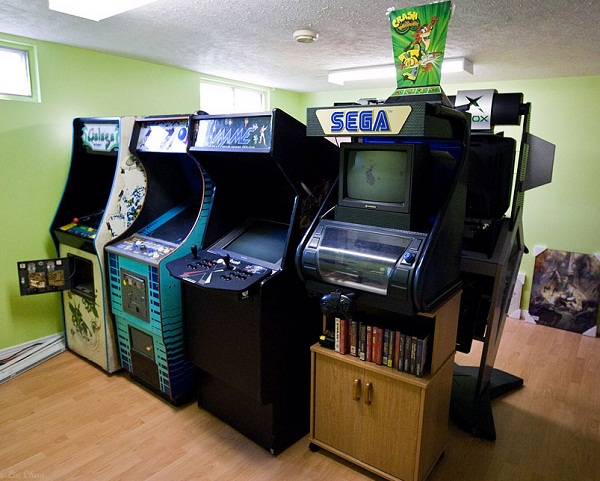
Most of us have hobbies.
When I was growing up stamp collecting seemed like it was on the verge of dying out but I started a collection anyway. I had a lot of fun with it and although I no longer have that collection (I really wish I did) it provided many hours of entertainment and gave my brain a chance to think.
Today, I collect video games.
It’s a hobby that is becoming more and more popular as more and more generations are born with gaming as a normal part of everyday life. One of the best things about game collecting as a hobby is that you can diversify your collecting in various ways.
For example, you can be an “everything” collector like I am. You collect all video game systems and games from the mid-1970’s to today. This is the most challenging (and dare I say it, expensive) of the choices but it doesn’t have to be. You could concentrate on the oldies, starting out with a system like the Atari 2600 or you could try to focus on the “16-bit era” and focus on systems like the Super Nintendo which came out in 1991 and produced a great library of titles.
Another great aspect of game collecting is that it can fit any budget. Frugal gamers can find the best of deals at garage sales and far, out of the way retailers or you can loosen your wallet a bit and find easier pickings at the bigger retailers.
With collecting, it’s all about the hunt.
It doesn’t matter where you live. You can take the family for a drive on the weekend while you look for buried treasures. For Canadians, there is even a website dedicated to classic game collectors where you can connect with like-minded individuals. Just head over to Canada’s Classic Game Collectors Website.
I think it’s important to define the parameters of what you are collecting (for example, are you collecting boxed items or “loose”) and so on. It gives you guidance when going shopping. I know some collectors who only buy sealed games (very expensive) and others who only collect certain game series (for example all of the Zelda games or all of the Pokemon titles). The possibilities are quite endless. Regardless of what approach you take, collecting can be almost as much fun as playing. For the Silo, Syd Bolton. Featured image- Commodore Vic-20 computer and modem used by the author to conduct the world’s first tweet from a Vic-20.
Yankee Candle Founder’s Estate: “like having Disneyland in the backyard”
Michael Kittredge started making candles as a teenager and selling them to friends and family. One of his first products was a Christmas candle he made for his mother on the family stove out of his melted crayons and a wick from a shoelace. Within a few years, he had opened his first Yankee Candle Shop in his hometown of South Hadley, Massachusetts. The business expanded to become the wildly successful Yankee Candle Company whos candles are sold all over America.
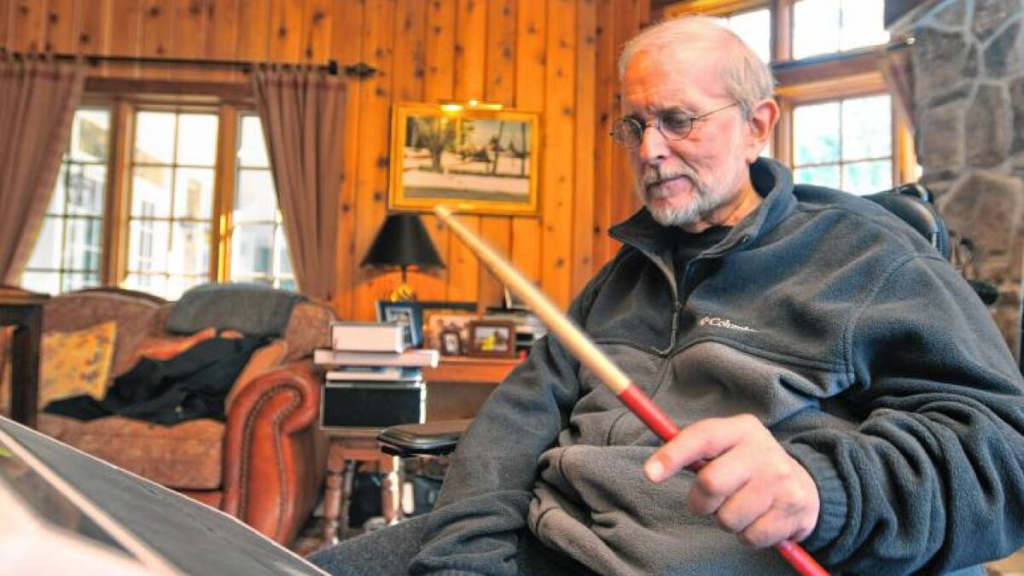
A long time guitarist, Michael Kittredge switched to the drums after having a stroke. He died in 2019 at the age of 67.

Kittredge cashed out in 1998, selling 90% of his company for $500 million USD/ $683 million CAD. He used the money to jet around the world, collect luxury sports cars, drink $20,000 USD/ $27,000 CAD bottles of wine, and construct a fantastic compound on over 60 acres of parkland in idyllic Western Massachusetts. With the entrepreneur’s passing in 2019, the estate his son described as “like having Disneyland in the backyard” has been listed for $23 million USD/ $31.4 million CAD .

Generous with friends, family, and employees, Kittredge designed his compound to entertain his guests in the utmost luxury. Sparing no expense, the eight Colonial-style structures on the property were constructed with the finest materials from all over the world. The main house includes five bedrooms, six full bathrooms and five half baths, and over 25,0000 square feet of living space.


The home features 11 fireplaces spread across multiple levels, a solarium, an oval office with glass walls, a pine-paneled living room with built-ins, and a stunning two-story great room with a balcony and an atrium-like ceiling. Two commercial-grade kitchens, one with five islands, and a wine grotto allow for large-scale entertaining.

Meandering paths on the property wander past ponds, fountains, waterfalls, and gardens to connect the main home with the estate’s many amenities. Several guest homes and staff quarters bring the bedroom total up to sixteen.

Three tennis courts, a T-shaped pool with expansive deck and fully equipped cabana, and a nine-hole golf course offer hours of athletic fun. For relaxation, the compound includes an epic 55,000-square-foot spa complex complete with multiple gyms and massage areas, saunas, a steam room, and an indoor tennis court with stadium seating.

The state-of-the-art, 4,000-square-foot outdoor stage has hosted such bands as Hall & Oates, The Doobie Brothers, KC and The Sunshine Band, and Eric Burdon & The Animals. A two-story arcade features pinball, slots, arcade games, and a three-lane bowling alley.


Two huge garages offer plenty of space for high-end toys while a full-sized auditorium offers another venue for concerts and shows. A truly spectacular indoor water park, modeled after the Bellagio in Las Vegas, with palm trees, water slides, and pools, completes the one-of-a-kind entertainment pavilion.


A sleepy town with less than 2,000 residents founded in 1750, Leverett, Massachusetts is best known for the Buddhist monument New England Peace Pagoda, historic churches, and a scenic chasm called Rattlesnake Gutter. It is close to the five-college area of Amherst, Hampshire, Smith, Mt. Holyoke, and the University of Massachusetts.
The listing is held by Johnny Hatem Jr. of The Sarkis Team at Douglas Elliman. For the Silo by Terry Walsh /TopTenRealEstateDeals.com
Historic Architect Edmund Burke Shaped Look Of Today’s Toronto
Since 1793, when the Town of York, the second capital of Upper Canada, was founded, Toronto has been an important economic and political hub.
The first governor of the Town of York, John Graves Simcoe, believed that this town would become a powerful industrial metropolis, and when Toronto became one of the top financial centres in the world, his dreams came true. Toronto, as the fifth most populous city in North America, is evaluated by experts and economists from the Economist Intelligence Unit as one of the world’s most livable cities.

The provincial capital of Ontario is dominates many sectors, including business services, finance, telecommunications, media, arts, film, music, television, software production, tourism, medical research, and engineering. There’s no doubt that Toronto is one of the fastest developing and growing cities in North America. We should remember and appreciate the most significant people in our city’s history who contributed to this prosperity.
Toronto is a perfect example of how the life and spirit of every city in the world is defined and influenced by its architecture.
Each part of Toronto has its own unique atmosphere that reflects its cosmopolitanism. The architecture of Toronto preserves various styles from different eras and centuries. Nevertheless, there were several architects whose work and designs significantly shaped the look of Toronto as we know it today. Let’s take a closer look at the work of the most significant Torontonian architects.
Edmund Burke (1850-1919)
Early Years
Burke was born in Toronto on October 31st, 1850 as the eldest child of lumber merchant and builder William Burke and his wife, Sarah Langley. Edmund Burke finished his studies at Upper Canada College and started to work as an architectural apprentice under the guidance of his uncle, Henry Langley, who was very distinguished among the first generation of architects who were taught in Canada. Back then, Burke was a twenty-year-old man with considerable skill and an open mind who was eager to learn as much as possible from his uncle. A great deal of knowledge about traditional styles was passed from Langley on to his young nephew. Langley’s influence can be recognized in the conservative undertones of Burke’s works. In 1872, he entered a partnership with his uncle. This year marked the formal beginning of his rich and successful career. His own business was set up in 1892, and in first years on his own, he worked on two important architectural projects: the Jarvis Street Baptist Church and McMaster Hall (now the Royal Conservatory of Music) on Bloor Street.

This was the first time that he was truly independent and could express himself without any limitations, making this a period of crucial importance for understanding Burke’s work. Gilbert Scott, one of the most notable figures in British architecture, was his biggest influence in his early works. However, Burke was able to brilliantly combine his progressive and innovative sensibilities with traditional architectural styles. Angela Carr, Assistant Professor of Art History at Carleton University, wrote in her study, Toronto Architect Edmund Burke: Redefining Canadian Architecture, that “Burke’s work developed consistently through a variety of building types in all periods, accommodating technological advances almost as rapidly as these appeared and expressing the new aesthetic of a changing society.“
Burke, Horwood, and White
Burke, after two years as a sole practitioner, established a partnership together with J.C.B. Horwood, and they were later joined by Murray White. All three of them were former students of Henry Langley. Their firm, which designed a vast number of churches across Canada, many luxurious mansions for wealthy citizens of Ontario, and many commercial buildings, was one of the most successful architectural companies in the country. The firm combined different historical styles with new techniques and new materials such as glazed terra cotta, early iron, reinforced concrete frames, and forms of fire protection.
Edmund Burke was eager to seek a new innovative solution that would encourage the modernization of technology. He shared his knowledge with his colleagues by giving lectures and issuing publications. His biographer noted that Burke “presided over the transformation of the architect from the craftsman to consulting professional.“ Burke is responsible for bringing to the practice of architecture in Canada the new vocabularies and technologies used in that era in the United States. He worked with American models, a type of plan than became standard across the country in the last two decades of the 19th century, when he was working on the Jarvis Baptist Church from 1874 to 1875. Moreover, he was responsible for introducing the “curtain-wall“ construction to Canada when designing the Robert Simpson store in 1894, which, in the following decades, inspired many architects of retail department stores across the country.

It is worth noting that Burke was also active in urban planning activities for the City of Toronto and that he also was a part of several committees established by the Ontario Association of Architects and Toronto’s Guild of Civic Art. He is the author of the Prince Edward Viaduct, also known as the Bloor Viaduct, which he designed together with the city engineer’s office. Moreover, he participated and worked on projects improving the city’s traffic flow.
Burke’s Work in Professional Architectural Societies
Edmund Burke was one of the leading figures responsible for the recognition of the architectural profession and for having a substantial influence on Torontonian architecture in the 19th century. Burke played a major role in codifying standards of practice and education in the field of architecture, which ensured basic rules and and proper working conditions for architects as well as protection from unqualified practitioners.
The ever-growing competition from the United States was the main reason for the establishment of innovative learning programs, the introducing of modern technologies, and the formation of professional architectural organizations. Burke was responsible for the establishment of the Ontario Association of Architects in 1889, which he later led as its president in 1984 and 1905 to 1907. Furthermore, he was one of the three founding members of the Royal Architecture Institute of Canada. His support of quality education was an important aspect of his contribution to Canadian architecture. He noted that “if we train our students thoroughly and see that no one but first class men are permitted to enter the profession, I think the rest will take care of itself.“
Edmund Burke devoted his life to architecture and introduced a new way of combining the newest trends with traditional styles. The last years of his life were dedicated to public and professional service. The face of Toronto continued to be shaped by his works and ideas through the works of his colleagues and students for many years.
“Few men of the present generation of architects have so widely held the respect and esteem of their confrères, or been more closely identified with the building progress of the country. Practicing continuously for a period of over forty years, during the time when Canada was passing from its more backwards state to the present great strides of nationhood, his efforts stand out prominently in the modern character of Canadian architectural work.“ Obituary of E.Burke, Construction (January 1919)
Notable Buildings Designed by Edmund Burke
Jarvis Street Baptist Church (1878) – Jarvis Street
Prince Edward Viaduct, also known as the Bloor Viaduct (1881)
Trinity-St. Paul’s United Church (1887–1889) – Bloor Street, west of Spadina Avenue
Owens Art Gallery (1893) – Mount Allison University, New Brunswick
St. Luke’s United Church (1874) – Sherbourne Street and Carlton Street
Beverley Street Baptist Church (1886) – 72 Beverley Street
Robert Simpson’s Department Store Building (1908) – 176 Yonge Street [*perhaps the building Burke is most famous for CP]
St. Andrew’s Evangelical Lutheran Church (1878) – 383 Jarvis Street
McMaster Hall, now The Royal Conservatory of Music (1881) – 273 Bloor Street West
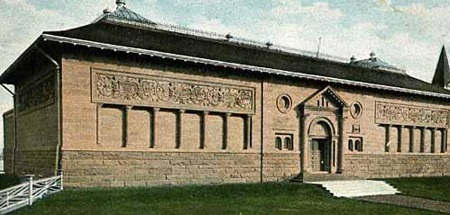
For the Silo by Jamie Sarner.
Supplemental- Discover the book, Edmund Burke- a genius revisited
Canada’s Truth And Reconciliation Commission
[This article was first published by The Silo on April 22, 2014] On June 10, 2009, the Honourable Justice Murray Sinclair, Marie Wilson and Chief Wilton Littlechild were appointed as Commissioners to the Truth and Reconciliation Commission of Canada (TRC), a component of the Indian Residential Schools Settlement Agreement.
Canada’s Truth and Reconciliation Commission is unique from other commissions around the world in that its scope is primarily focused on the experiences of children and its research spans more than 150 years (one of the longest durations ever examined). It is also the first court-ordered truth commission to be established and most notable, the survivors themselves set aside 60 million dollars of the compensation they were awarded to help establish the TRC.
Over the course of its 5 year mandate, one of the main tasks of the Commission is to create an accurate and public historical record of the past regarding the policies and operations of the former residential schools, what happened to the children who attended them, and what former employees recall from their experiences.
It is difficult for Canadians to accept that the policy behind the government funded, church run schools attempted to “kill the Indian in the child”. The violent underpinnings of the policy challenge the way we think about Canada, and call into question our national character and values. We have been taught to believe that we are a peaceful nation, glorious and free.
The residential school legacy shines a light in our darkest corners, where we feel most vulnerable.
Over 130 Residential Schools were located across Canada, with the last one closing in 1996. More than 150,000 First Nations, Métis and Inuit children as young as five years old were forcibly removed from their families and placed in institutions that shamed their languages, customs, families, communities, traditions, cultures and history. In essence, they were not allowed be themselves and denied the love and belonging owed to all children.
While some former students had positive experiences at residential schools, many suffered emotional, physical and sexual abuse, and others died while attending these schools. Other lessons in trauma included assimilating children to gender roles, non-skilled labour and religion to prepare them for future integration. For the parents left behind, the worst lessons in shame, grief, loss and disconnection. Whole societies were undone.
In addition to creating the public historical record of the past, the survivors also tasked the Commission to reveal to Canadians the full and complete story.
What were they thinking? Why should it matter to ordinary Canadians?
Here’s why: When we tell our stories we change the world. When we don’t tell our stories we miss the opportunity to experience empathy and to cultivate authenticity, joy and belonging. (Brené Brown, 44) Through story-telling, the survivors are compelling Canadians to listen and respond with deep compassion and to re-set relationships in a big way in this country. This is our greatest opportunity to recognize shared history and our shared humanity. These stories are a gift and will help us to shape our shared future.

Through statement gathering at national or regional events and at TRC Community Hearings, former students, their descendants and anyone who has been affected by the Residential Schools legacy, had an opportunity to share their individual experiences in a safe and culturally supportive environment. The TRC concluded its last community hearing in March 2014 and has collected more than 6, 200 statements.
Almost all of them were video-and-audio-recorded and range from a few minutes to a few hours. The statements will be stored at the National Research Centre on Indian Residential Schools at the University of Manitoba. Students, researchers and members of the public will be able to access the statements to learn about residential schools and the legacy they leave behind.
As the TRC begins to reveal to Canadians the full and complete story of residential schools and inspire a process of reconciliation across this country, ordinary Canadians seem ill-equipped to make the journey from shame to empathy. “We know the voices singing, screaming, wanting to be heard- but we don’t hear them because fear and blame muffle the sounds” (Brené Brown, 42) We need to prepare ourselves to go to the dark corners of our history, so we can stand in the light together as equals.
In my next article, I will share with you more about empathy, how to practice empathy and why its essential to building meaningful and trustworthy relationships.) For the Silo, Leslie Cochran.
(Brené Brown, 42 and Brené Brown, 44) are taken from her first book “I thought it was just me.”
1980s HORROR CLASSIC FRIGHT NIGHT DEBUTS ON 4K UHD
Meet Jerry Dandrige. He’s sweet, sexy, and he likes to sleep in late. You might think he’s the perfect neighbour. But before inviting Jerry in for a nightcap, there’s just one thing you should know. Jerry prefers his drinks warm, red, and straight from the jugular! It’s FRIGHT NIGHT, a horrific howl starring Chris Sarandon as the seductive vampire and William Ragsdale as the frantic teenager struggling to keep Jerry’s deadly fangs out of his neck.
Only 17-year-old Charley Brewster (Ragsdale) knows Jerry’s bloodcurdling secret. When Charley can’t get anybody to believe him, he turns to TV horror host Peter Vincent (Roddy McDowall), who used to be the “Great Vampire Killer” of the movies. Can these mortals save Charley and his sweetheart Amy (Amanda Bearse) from the wrathful bloodsucker’s toothy embrace?
AVAILABLE AS A LIMITED EDITION STEELBOOK OCTOBER 4TH
If you love being scared, FRIGHT NIGHT will give you the nightmare of your life.
DISC DETAILS & BONUS MATERIALS
4K ULTRA HD DISC
- Feature scanned from the original camera negative and presented in 4K resolution with Dolby Vision
- All-new Dolby Atmos audio + 5.1 + original Dolby Stereo
BLU-RAY™ FEATURE DISC
- Feature presented in High Definition, sourced from the 4K master
- 5.1 + original Dolby Stereo
- Special Features:
- NEW: Deleted Scene Storyboards – Tom Holland guides us through the film’s only deleted scene, using his personal pre-production storyboards
- NEW: Holland/Beyda Spec Trailer with an introduction by Tom Holland – the never-before-seen alternate trailer cut by Fright Night editor Kent Beyda with the guidance—and narration—of Tom Holland
- Audio Commentary with Writer/Director Tom Holland, Actors Chris Sarandon & Jonathan Stark, Moderated by Filmmaker Tim Sullivan
- Audio Commentary with Writer/Director Tom Holland, Actors William Ragsdale & Stephen Geoffreys, FX Artist Randall Cook, Moderated by Journalist Jeremy Smith and Filmmaker Tim Sullivan
- You’re So Cool, Brewster! The Story of Fright Night
- What is Fright Night
- Tom Holland: Writing Horror
- Theatrical Trailers
BLU-RAY™ SPECIAL FEATURES DISC
- Special Features:
- NEW: Fright Night 35th Anniversary Script Read – an anniversary cast reunion and script reading featuring writer/director Tom Holland and special guests including Rosario Dawson, Jason Patric, and many more!
- NEW: The Queer Lens: Bryan Fuller in Conversation with Amanda Bearse – a candid discussion between Fright Night aficionado Bryan Fuller (Hannibal, Queer for Fear: The History of Queer Horror) and Fright Night star Amanda Bearse about the Gothic’s queer roots, the film’s queer subtext, and its metaphorical power
- NEW: A Novel Approach: The Splatterpunk Story of the Fright Night Novelization – Tom Holland, Fright Night novelization authors John Skipp and Craig Spector, and publisher Mark Alan Miller discuss how the progenitors of the splatterpunk genre came to work on the book, their writing process, and the novel’s enduring legacy
- NEW: SFX Storyboard Comparisons – a selection of original storyboards from key effects sequences, compared with their final filmed versions
- Roddy McDowall: From Apes to Bats
- Tom Holland and Amanda Bearse Talk Fright Night
- Round Table with Tom, Stephen and William
- Shock Till You Drop Presents Choice Cuts with Tom Holland and Ryan Turek
- First Ever Fright Night Reunion Panel – Fear Fest 2 (2008)
- Weekend of Hell Panel with Amanda and Stephen
- Vintage EPK with Behind-the-Scenes Raw Footage
CAST AND CREW
Written and Directed By: Tom Holland
Produced by: Herb Jaffe
Cast: Chris Sarandon, William Ragsdale, Amanda Bearse, Stephen Geoffreys and Roddy McDowall
SPECS
Run Time: Approx. 106 minutes
Rating: 18A
4K UHD Feature Picture: 2160p Ultra High Definition, 2.39:1
4K UHD Feature Audio: English Dolby Atmos (Dolby TrueHD 7.1 Compatible) | English 5.1 DTS-HD MA | 2-Channel Surround DTS-HD MA
Spiritual Counselor: Illness often comes with deeply felt stress

Sometimes, not knowing the truth about something of immediate importance can create some of the most intense stress, says former chronic pain sufferer Janet Komanchuk.
“The families of victims who’ve been missing for years or decades – identifying the body of their loved one, for example, can bring closure. For me, being diagnosed with fibromyalgia was also a relief – it meant that I had a name for my chronic pain,” says Komanchuk, whose pain was so intense over a period of several years that she had to retire as a schoolteacher.

“My diagnosis meant I wasn’t crazy, that the pain wasn’t ‘all in my head,’ as some had suggested. It meant that my flu-like symptoms,
accompanied by intense waves of pain, finally had form and dimension. I understood I was just one of many suffering with chronic pain that at last had a name.”
Fibromyalgia syndrome is a complex, chronic condition of widespread muscular pain and fatigue. It often includes sleep disturbances, impaired memory and concentration, depression and other debilitating symptoms. The syndrome is one of the most common chronic pain disorders, affecting nearly one in every 60 North Americans.
When medical leave, morphine patches, codeine and myriad pharmaceuticals brought no relief, I tried a different approach in combination
says Komanchuk, (www.jkomanchuk.com), who has since enjoyed more than 13 years of pain-free and prescription-free living after finding an alternative healing therapy that works for her. She now works as an educational writer and public relations assistant with Joy of Healing, the alternative healing modality that she says brought about her remission.

“Through the years, I’ve learned a thing or two about dealing with the psychological trauma of illness.” Komanchuk shares tips to keep in mind for those suffering from an indeterminate condition.
• Trust in yourself. “At times, the pain was so intense that I was certain my flesh was tearing away from my bones,” says Komanchuk, who was just like the more than 100 million Americans who suffer from chronic pain, which costs nearly $600 billion annually in medical treatments and lost productivity, according to the Institute of Medicine. Despite her unmistakable pain, the critical doubt from others as to what she was experiencing was disheartening, at times causing her to doubt herself.
“Trust in yourself, for you know what you’re feeling,” she says. “Don’t fall victim to the judgment and criticism of others who doubt your illness and the limitations it places on you or your activities.”
• Don’t quit! Despite the immense scope of chronic pain, very little is spent on research to find better ways to manage pain. Komanchuk was faced with the prospect of spending the rest of her life in a nursing home.
“Yes, the pain was excruciating, debilitating and fatiguing, yet I still felt as though my life had the potential for vitality,” she says. “The idea of going to a nursing home – reasonable for some – felt like a kind of death to me.”
Convinced that there was hope for her in overcoming fibromyalgia, she persisted in her search for wellness answers.
• Seriously consider alternatives. She was able to achieve what she thought was impossible – not just temporary relief, but permanent, lasting mind-body-spirit wellness. She had been to orthopedic surgeons, neurologists, rheumatologists, psychologists, underwent MRIs and took all manner of medications for her unbearable pain. In a narrow sense, it would seem as though she exhausted her options – until she looked beyond traditional Western medicine. Alternative treatment guided her to recognize the layers of stress throughout her life that she believes were a primary driver of her chronic pain.
“Every day, I am filled with gratitude for the fact that I am free of the torment from fibromyalgia that had plagued me throughout my
life,” she says. “I just wish I could give others a piece of the relief that I’ve found. All I can say is keep your eyes open, keep the hope alive and don’t give up!” For the Silo, Ginny Grimsley
Supplemental- The Science of Yoga http://www.forbes.com/sites/alicegwalton/2011/06/16/penetrating-postures-the-science-of-yoga/
Composition For Solo Piano With 40 Channel 1 Bit Electronics
New Amsterdam Records releases are special and Surface Image, the album-length composition for solo piano with 40-channel 1-bit electronics, composed by Tristan Perich and performed by pianist Vicky Chow is no exception.
“Surface Image is a stunning marriage of Perich’s inspired electronic aesthetic and Chow’s nuanced yet fiercely virtuosic playing. The line between electric and organic is artistically blurred, as the simple hand-wired electronics fuse with the individual notes of the piano on the same, expansive plane. Recorded at EMPAC’s sound studio by producer Argeo Ascani and mix engineer Jeffrey Svatek.”


Pre-Order Now: https://newamsterdamrecords.bandcamp.com/album/tristan-perich-surface-image
Microtonal Wall in “Audible Spaces”
Curated by Alexis Lowry Murray, “Audible Spaces” presents three sound installations that encourage participants to explore the subtleties of listening. Tristan Perich, Zarouhie Abdalian, and [The User] have each created immersive environments using seemingly uniform sounds that dissolve into tonal, tactile, and temporal variations as participants engage with them. Perich’s Microtonal Wall (2011), on view in the Cohen Gallery at the Granoff Center, demonstrates the extraordinary complexity that can be generated using only the most basic electronic tools. Drone-like from a distance, this 25 ft long sound field of 1-bit noise dissolves into 1500 unique frequencies.
Bullet Train Arrives On 4K Ultra HD October 18
In Bullet Train, Brad Pitt stars as Ladybug, an unlucky assassin determined to do his job peacefully after one too many gigs gone off the rails. Fate, however, may have other plans, as Ladybug’s latest mission puts him on a collision course with lethal adversaries from around the globe—all with connected, yet conflicting, objectives—on the world’s fastest train.
The end of the line is just the beginning in this non-stop thrill-ride through modern-day Japan from David Leitch, the director of Deadpool 2. Available on Digital 09/27 and on 4k Ultra HD, Blu-Ray, and DVD 10/18.

The “heart-pounding wild ride” comes home
– Kristy Puchko, MASHABLE

4K ULTRA HD™, BLU-RAY™ AND DIGITAL
- Outtakes & Bloopers
- Catch What You Missed: Easter Eggs
- All Aboard the Pain Train: Stunts
- Mission Accomplished: Making of Bullet Train
- Trained Professionals: The Cast
- Select Stunt Previs
- Audio Commentary with David Leitch, Kelly McCormick & Zak Olkewicz
DVD
- Mission Accomplished: Making of Bullet Train
- Trained Professionals: The Cast
CAST AND CREW
Directed By: David Leitch
Produced By: Kelly McCormick, David Leitch, Antoine Fuqua
Executive Producers: Brent O’Connor, Ryosuke Saegusa, Yuma Terada, Kat Samick
Cast: Brad Pitt, Joey King, Aaron Taylor-Johnson, Brian Tyree Henry, Andrew Koji, Hiroyuki Sanada, Michael Shannon, Benito A Martínez Ocasio, and Sandra Bullock
Based on the Book By: Kotaro Isaka
Screenplay By: Zak Olkewicz
SPECS
Run Time: Approx. 126 Mins.
Rating: R: Strong and bloody violence, pervasive language, and brief sexuality
4K UHD: 2160p Ultra High Definition / 2.39:1 • Audio: English Dolby Atmos (Dolby TrueHD 7.1 compatible), French (Doublé au Québec), Spanish 5.1 DTS-HD MA, English – Audio Description Track 5.1 Dolby Digital • Subtitles: English, English SDH, French, Spanish • Color
Blu-ray™: 1080p High Definition / 2.39:1 • Audio: English, French (Doublé au Québec) 5.1 DTS-HD MA, Spanish, English – Audio Description Track 5.1 Dolby Digital • Subtitles: English, English SDH, French, Spanish • Mastered in High Definition • Color
DVD: 2.39:1 Anamorphic Widescreen • Audio: English, French (Doublé au Québec), Spanish 5.1 Dolby Digital, English – Audio Description Track Dolby Surround • Subtitles: English, English SDH, French, Spanish • Color
ABOUT SONY PICTURES ENTERTAINMENT
Sony Pictures Entertainment (SPE) is a subsidiary of Tokyo-based Sony Group Corporation. SPE’s global operations encompass motion picture production, acquisition, and distribution; television production, acquisition, and distribution; television networks; digital content creation and distribution; operation of studio facilities; and development of new entertainment products, services and technologies. Sony Pictures Television operates dozens of wholly-owned or joint-venture production companies around the world. SPE’s Motion Picture Group production organizations include Columbia Pictures, Screen Gems, TriStar Pictures, 3000 Pictures, Sony Pictures Animation, Stage 6 Films, AFFIRM Films, Sony Pictures International Productions, and Sony Pictures Classics. For additional information, visit http://www.sonypictures.com/corp/divisions.html
The Godlike Power Of Money
Money runs the world’s economy. It determines who rules nations, and it rules lives.
These are the three most significant properties attributed to the power of money, in addition to its basic function as a medium of exchange. But we can attribute several less significant properties, although similarly important, to the power of money. They include:
1. Money separates people of the same nation into classes, divisions and groups.
2. The pursuit of money and wealth can turn man against man, son against father, family against family and nation against nation.
3. Money’s devaluation of natural values makes Nature the object of buying and selling.
4. The ability of man to perform labor by placing a price on his head allows one man, or group of men, to enslave another individual or group of individuals.
5. The ability of money to corrupt tends to change man’s personality from social being to self-oriented individual.
6. The power of money drives people to produce services in order to pursue everyday life. This inflicts stress upon people, leading to a spiritual breakdown manifested in acts of crime and mental illnesses.

Amazingly enough, not many people in modern society are aware of the source of the power or money, including businessmen such as bankers, money market brokers and financiers, who consider themselves money experts.
Perhaps one of the reasons the origin of money’s power is one of the least discussed subjects among academics is the non-existence of prehistoric written records. The second reason is historians’ failure to unveil when and how currency converted from an ordinary medium of exchange into the dominant value of society by expanding its usage to include rendered labor compensation. Also, when and what societal changes elevated the abstract value of currency into an absolute ruling power over humans, including all natural values and treasuries of the Earth.
The blank page left by the theory of early civilization about the invention and rise of money invited independent thinkers to develop their own theories.
The records indicate that this enigma is hidden in the formation of the first state and government. Reforms enacted almost 4,000 years ago led to the breakup of the original communion society, creating conditions that enabled different classes of people to pursue independent ways of life.
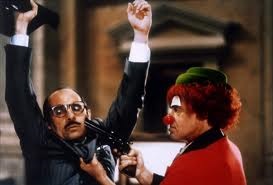
2. The pursuit of money and wealth can turn man against man, son against father, family against family and nation against nation.
Regulating all natural values and treasuries, including human labor, through money, one individual was able to declare himself the king, and establish absolute ruling power over society by entrapping people within guarded wall.
This historic event advanced the abstract value of money from the ordinary medium of exchange to an absolute ruling power unparalleled in the real world. Some ancient spiritual leaders expressed a serious concern about the prudence of the proposed reforms. They warned that the enactment of these reforms would void the God-given dominant role of natural values within society at the expense of the abstract value of money. This would subsequently interrupt the relationship between man and nature, and change the original role of man upon the Earth from the guardian of nature to the biggest annihilator of nature.
But the followers of the philosophical doctrine of man’s uniqueness compared to other species dismissed such warnings. Promoting man’s spiritual virtue of freedom to make his own norms and laws instead of following the law of nature, they were delighted by the proposed reforms.
Ever since, the corruption, exploitation of one man over another and class warfare became the norms of the New World Order leadership.
The comparatively recent freedom movements that led to the French and Bolshevik revolutions failed to liberate people from the chains of money’s absolute power. Despite that, the idea of freedom lives on in people’s minds, inspiring liberators to wonder why the formation of a communist state failed to succeed.
The liberators failed to realize that the institution of state and government is the foundation that, by providing the conditions for money currency to function, imposes absolute ruling power over society. This means that the institution of state and government is not a suitable foundation for the establishment of a free, classless society.
Is the only way to liberate society from the absolute power of money a return to the system of farming communities and declaring abolition of money currency, which would ultimately lead to dismantling the institutions of state and government?
However, taking into account that man is biologically a mortal relative entity incapable of resisting temptation offered by the absolute power of money, the prospect for the abolition of money is not practically realistic. For the Silo, Michael Vladimirovich Trisho.
Featured image: imagesci.com
Michael Vladimirovich Trisho is the author of “How Did Humanity Become Enslaved to Money?” Born in Panchevo, currently part of Serbia, Trisho’s tendency to inquire about the mysteries of the world using reason and logic were evident at an early age. All his life, he wondered how humankind became entrapped by money and why people believe a money-based society is best. After immigrating to the United States, he continued to examine early history in search of answers about the monetary system and its relation to the institution of state. Examining archeological fossils and excavations focused only on a narrow part of early human experience and did not reveal important events that played a critical role in society’s development. Michael created his own reconstruction of events, the product of which is his debut novel.
Supplemental- How does the U.S. Federal Reserve drive the world economy? http://www.cnbc.com/id/100430256
The 20th Century spread of Bolshevik power- http://schools.cbe.ab.ca/b628/social/russia/post_revolution_history.html
What Are The Different Types Of Vegan Meal Planning?
Meal planning is such a time saver. Not only do those who care about their nutrition get to save time while planning meals, but they continue eating healthy, even on the busiest days. Are you already on a plant-based diet or just thinking about it?
Whether you are just trying to implement vegan or vegetarian meal prep into your lifestyle, or you are looking for some new tips – this article will provide what you need. Here is how to get your plant-based diet on track via meal planning.

Think About Pro Guidance
Making changes to your diet isn’t easy, but it is always worth it because there is always a goal behind it. Do you want to build muscles? Lose weight? Have a more balanced diet? Experience a vegan pregnancy diet plan? Or just explore more intuitive eating?
Even if your reason is not listed here, you should know that the best way to get the result that you want is a plant-based nutritionist ; a person of this sort of expertise can help enhance toddler/child/adolescent nutrition, help you achieve your sports goals, and help you deal with many digestive problems.
Not only that, but plant-based nutrition can help you organize your meal in such a way that you will have enough time to cook, eat peacefully, and easily achieve all of your other plans.
Sketch Out A Week Of Meals
This step may sound confusing and like a lot to chew on. But in reality, it’s very easy. All you have to do is choose a dinner for every day of the week. If possible, think about leftovers and use them for an extra meal.
Once you plan your meals, you are ready for the next step – grocery planning. Make a specific grocery list of things that you will need. Not sure what you might need for a feel of a plant-based diet? Check the next step.
Chop Vegetables
One of the best things about a plant-based diet is that you get to eat a lot of vegetables. This is not only healthy but easy to prepare. Chopping vegetables is easy, plus vegetables are super easy to store and use whenever you want.
Chop your vegetables in advance: fill your cups with onion, sliced mushrooms, and sliced cabbage… This will make everything much easier and faster to prepare.
Fast Tips On Meal Prep
● Stock your kitchen counter with beans, lentils, and whole grains
● Have olive oil
● Use oatmeal for breakfast
● Cook for two days
● Keep track of your recipes
● Drink water
● Start small
● Get organized
● Invest in high-quality containers
● Keep a variety of spices
● Always use your meal prep recipes to make a grocery list
● Use glass containers
● Freeze your food

Make new lifestyles more fun and delicious with new recipes. Start small, take it slow, and go step by step. Stay hydrated, hire a professional to help you navigate your new changes, and be persistent. Remember that it takes three weeks for something to become a habit, and three months for something to become a lifestyle. For the Silo, Bill Gordon.
What Is The Future Of Book Libraries?
“Libraries are our friends” said famed writer Neil Gaiman. Katharine Hepburn once asked “what in the world would we do without our libraries?” When last polled about a decade ago in 2011, Toronto was home to ninety-eight public libraries and two book mobiles; with approximately thirty thousand programs hours and more than 19 million in person visits.
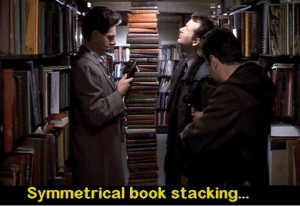
Despite the seeming popularity of the time honored library, there have been very legitimate concerns about the decline of the library in our digitized world. The cynical pronouncement from the Annoyed Librarian blogger is that no one will even notice as libraries vanish because people will be “too busy renting ebooks from Amazon”.
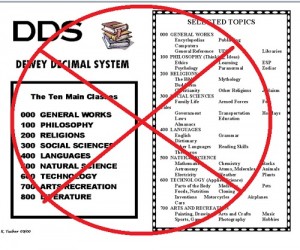
Is there a future for Libraries?
Books are being replaced with ebooks and the other popular resource, DVDs, are also rapidly being replaced by online movie providers. Publishing companies are not easily persuaded to turn over ebooks (as Libraries offer their use for free, and it’s easier to control the distribution of e-resources than print media which can be obtained anywhere), so although Libraries attempt to acquire as many ebooks as possible, this isn’t always easy.

Other sources argue that if people believe the internet is making libraries obsolete, it’s because they haven’t been in a library recently.
The reality is that libraries, like so many public institutions, have adapted to new digitized world.
Book circulation may have declined, but the Library now offers a wider diversity of services. Libraries offer free wi-fi, public computers for personal use, an assortment of programs for all age groups, Library accounts accessible online, and even offer services such as income tax filing assistance and computer classes for seniors. For the Silo, Charity Blaine.
Long Live Our Noble Queen
As the world mourns the passing of Queen Elizabeth II, we undoubtedly acknowledge the scope of her public service for over 70 years. She is one of the most recognized and famous people on the face of the earth.
My parents travelled to England when I was young and could (hope to) catch glimpses of the Royal Family, including the Queen, outside Buckingham Palace. My family, one could say, became Royal Watchers. Years later, I’d be hired by former MPP Toby Barrett UE who I quickly learned harbored profound respect for Queen Elizabeth II.
Shortly after officially becoming our longest reigning Monarch, Toby penned a newspaper column that began with: “Queen Elizabeth II is the only British Monarch in history properly trained to change a spark plug!” As Toby said at the time, the statement exemplified the character of our Queen.
Elizabeth learned to change a spark plug at 18 (during the Second World War) after joining the British Army Women’s Auxiliary Territorial Service. She served as an army truck mechanic and as an ambulance and army truck driver.
Elizabeth carried an incredible responsibility throughout her life, beginning at a young age. Upon taking the throne in 1952, she witnessed enormous social change. At 25, Elizabeth became Queen, and was officially crowned at her coronation two years later.
During her reign, Queen Elizabeth visited Canada more than any other country – 22 times. She must have had a special place in her heart for our country and its people, as she was known to refer to Canada as home. From the outpouring of sentiments, the feeling was indeed mutual.
On September 8th, the Queen’s children travelled to Balmoral, near Aberdeen, after physicians placed her under medical supervision. Later in the day Thursday, news spread that the Queen had passed away peacefully in the afternoon. A sad, solemn day.
Queen Elizabeth II officially made Liz Truss Britain’s prime minister two days before her passing. Truss would become the 15th prime minister to meet with the Queen. The meeting was at Balmoral Castle, in the Scottish countryside, where Boris Johnson first arrived to begin the power transfer. The first prime minister the Queen met with during her reign was Winston Churchill – a leader I often quote.
Last Thursday, Prime Minister Truss described Queen Elizabeth II as the rock on which modern Britain was built and continued by saying that she had “provided us with the stability and strength that we needed.” In times of adversity, the Queen has steadied nations with her strength and stoicism – the embodiment of a true leader.

Succession plans have long been in place, and the Queen’s son, Charles III, will become King. As an aside, I met Prince Charles and Camilla a few years back at a function in Toronto. It was a cheeky meeting and one I will never forget.
While we all come to grips with the passing of a lady who impacted our lives in ways, we did not realize, Britain is preparing to usher in a new era in the nation’s fascinating history. Britain, Canada and the Commonwealth will undoubtedly embrace the King and offer him loyalty and devotion, exactly as Her Majesty would have wished.
For the Silo, by Bobbi Ann Brady MPP Haldimand-Norfolk
What Dog Breeders Don’t Tell And Trainers Don’t Teach
Could You Lose Your Homeowner’s Insurance Because of Your Dog?
In many years, dog bites accounted for more than one-third of all homeowner’s insurance liability claims in the United States, according to the Insurance Information Institute and State Farm. In Canada numbers are not readily available but there is a strong chance we are not far behind.
“Those claims can be financially hard on the homeowners and tragic for the dogs, which is especially troublesome when you know that bites aren’t a ‘bad dog’ problem – they’re a human ignorance problem,” says Melissa Berryman, a dog bite specialist who designed and teaches a safety and liability class for dog owners. She’s the author of “People Training for Good Dogs: What Breeders Don’t Tell You and Trainers Don’t Teach”.
“In all of my years as an animal control officer, I’ve never come across an incident with a dog that was not preventable,” she says. If we look back a decade during an especially peak period, there were 360,000 nonfatal dog bite injuries treated in emergency rooms in the United States, according to the Centers for Disease control, with claims totaling into the hundreds of millions of dollars.
“Regardless of provocation, dog owners are largely held liable and see their insurance canceled or their premiums increased. To be reinstated premiums can go up and insurance companies often require them to get rid of the dog. And, often, that means the dog is euthanized.”
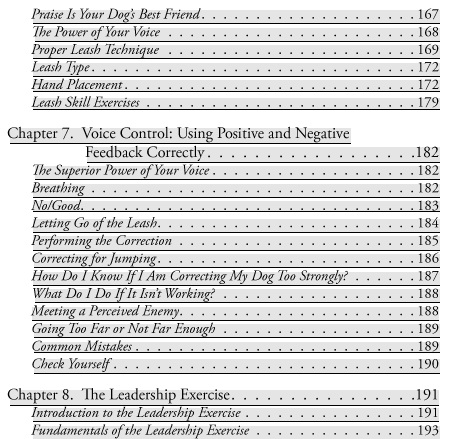
Pet owners can prevent this common and unnecessary tragedy by understanding a dog’s perspective and acting accordingly.
She offers five tips to reduce dog bite incidents:
• Remember, dogs aren’t trying to protect a home when they react negatively to strangers or visitors: Dogs place no value on your home, car, or the valuables they might contain. When they’re in a home or car, they are trapped in an enclosed area and will respond to perceived threats with an automatic fight-or-flight response. It is the owner’s responsibility to train dogs to calmly signal someone’s approach and then to assert authority over the situation.
• Consider your dog’s “rank”: Dogs have superior/subordinate relationships similar to the military. Rank of family and guests dictates a dog’s behavior towards them. A high-ranking dog, a “general,” won’t tolerate insubordinate behavior from a perceived low ranking “private’’ child or guest. Bites often occur when human “privates” try to take food or toys away, hug or pull a “general” type dog by the collar off of furniture.
• Yelling can exacerbate a dog’s agitation: Your dog doesn’t know you’ve ordered pizza, so when the delivery person arrives, your dog is agitated by the threat at the door and starts barking. When you yell at your dog to stop barking, he interprets this as agitation on your part; he understands tone, not language. That only increases a dog’s anxiety and vulnerability. When the door opens, the dog bites because it thinks you and he are both feeling threatened and you’re both going to attack the threat. It’s best to happily reassure your dog when someone arrives and leave the greeting of guests to you, and not the dog.
• How you treat strangers influences how your dog treats them: Dogs respond to their owners’ behavior, which gives them signals about whether or not a situation is safe. When the dog’s owner meets a stranger and interacts formally with that stranger, as many of us do, dogs can view this as the behavior of foes, or as apprehension, such as that of prey. Owners holding leashes tightly unwittingly place their dog in the dangerous fight stance of the fight or flight response. It’s best to relax and act like a friend when meeting strangers, which will elicit a friendly response from a dog.
“Dogs react based on their pack positions, the handling ability of their owners and the situation and context,” she says. “People have the power to recognize this and redirect the interaction to that of friends.”

By understanding and respecting how dogs’ instincts and natural behaviors differ from ours, dog owners can prevent bites and insurance headaches, Berryman says.
A Massachusetts animal control officer for nearly ten years, Melissa Berryman is a national dog bite consultant who founded the Dog Owner Education and Community Safety Council and works with communities ,rescue groups, dog owners and bite victims. For the Silo, Ginny Grimsley.
Ukraine: How UNESCO Supports Odesa’s Heritage & Cultural Life
Paris, 30 August 2022 – At a meeting with UNESCO Director-General Audrey Azoulay at the Organization’s Headquarters, Oleksandr Tkachenko, Ukrainian Minister of Culture and Information, announced that his country will request the inscription of Odesa on UNESCO’s World Heritage List. For its part, the Organization will deploy new measures to protect Ukrainian cultural heritage, particularly in Odesa and L’viv.
Since the beginning of the war, UNESCO has been deploying emergency measures in Ukraine as part of its mandate for education, culture, science, information and communication.
The Organization has mobilized close to $7 million USD/ $9.17 million CAD to date, provided numerous in-kind grants and made its experts available to advise professionals on the ground.
A working meeting was held at UNESCO Headquarters on Tuesday between Ms Azoulay, UNESCO Director-General, Mr Tkachenko, Ukrainian Minister of Culture and Information, and Ernesto Ottone, UNESCO Assistant Director-General for Culture, to ensure the proper implementation of these actions in the field of culture. On this occasion, the Minister also expressed new needs which UNESCO is committed to meet.

Inscription of Odesa on the World Heritage List
Oleksandr Tkachenko announced Ukraine’s decision to submit t the nomination of the Historic Centre of Odesa for inscription on UNESCO’s World Heritage List. Nationally recognized and protected, this site is located only a few dozen kilometres from the front line and has already been struck by artillery fire. On 24 July 2022, part of the large glass roof and windows of Odesa’s Museum of Fine Arts, inaugurated in 1899, were destroyed.
At the request of Ukraine, UNESCO has already mobilized international experts to provide technical support to the country so that this nomination can be examined urgently by Member States sitting on the World Heritage Committee, with a view of inscribing it on the World Heritage List and on the List of World Heritage in Danger.
The World Heritage Committee will also be recommended to add UNESCO’s World Heritage sites of Kyiv and L’viv, which are also under threat, to the List of World Heritage in Danger.

UNESCO completes its emergency measures on the ground
In parallel to these steps and in view of the new needs expressed by professionals in the field, the Director-General announced at this meeting that UNESCO would strengthen its support to the city of Odesa by providing:
- Funding to repair the damage inflicted on the Odesa Museum of Fine Arts and the Odesa Museum of Modern Art since the beginning of the war, and to finance the hiring of additional staff dedicated to the protection of collections.
- Support for the digitization of at least 1,000 works of art in Odesa as well as the documentary collection of the Odesa State Archives, through the provision of appropriate hardware.
- New equipment to the Odesa Regional Administration for the in situ protection of cultural property: protective panels, sandbags, fire extinguishers, fireproof fabrics and gas masks will be delivered to the Department of Culture, Religion and Protection of Architectural Heritage. They will allow the recovery of public monuments and sculptures, which has been underway since the beginning of the war, to continue.
With a view to boosting the recovery of Ukraine’s cultural sector, the Director-General also offered the Organization’s support for the creation of a UNESCO Cultural Centre in L’viv, as requested by the city mayor. It would be a place for artists to meet and share experiences, and would host training programmes, various activities and events. A budget of $1.5 million usd/ $1.96 million cad has already been earmarked to finance its opening and operational costs over several months.
In addition, the Director-General of UNESCO decided to deploy a liaison officer in Kyiv to coordinate these actions. The officer will complement the team of local experts already working in the field. For the Silo, Clare O’Hagan/UNESCO.
Understanding the Canadian Honours Award System
The Canadian Honours Award System is a system in which citizens of Canada can be recognized for their exceptional achievements. The system comprises three levels: the Order of Canada, the Order of Military Merit, and the Order of Merit. Each level has its criteria for eligibility and its process for nomination and selection.
The Order of Canada is the highest level of the Canadian Honours Award System. It was established in 1967 to recognize outstanding achievement and service in various fields of human endeavor.

Below is everything you need to know about the Canadian honors award system, from eligibility requirements to the nomination process.
The requirements
1- You must be a Canadian citizen or a permanent resident of Canada
When you are a citizen of another country, you are not eligible for the Order of Canada, but you may be eligible for one of our other awards.
2- You must have made a significant contribution to your community or Canada
Your contribution can be in any field, such as the arts, business, philanthropy, science, sports, or public service.
3- You must be nominated by someone else
You cannot nominate yourself. Nominations are reviewed by an independent advisory committee, which makes recommendations to the governor-general.
4- You must meet the criteria for the specific level of award you are being nominated for
The Order of Canada has three levels: Companion (CC), Officer (OC), and Member (CM). The criteria for each level are different.
How to be nominated
1- Talk to the people who know you best
Your nominator should be someone who knows you well and can attest to your achievements. They may be a colleague, friend, or family member.
2- Fill out the nomination form
The nomination form must be completed in full and signed by the nominator. It includes sections on your biography, achievements, and contributions.
3- Include letters of support
Your nominator should also include letters of support from two other people who know you well. These letters should speak to your character and accomplishments.
4- Submit your application
Applications can be submitted online or by mail. The deadline for submissions is June 30.

The Selection Process
1- Review by an independent advisory committee
All applications are reviewed by an independent advisory committee, which makes recommendations to the governor-general. The governor general then decides who will receive the award.
2- Notification of the decision
The Office of the Secretary to the Governor General will notify all nominees of the decision by mail or email.
3- Ceremony and presentation of the award
Award recipients are invited to a ceremony at Rideau Hall, where they will receive their insignia from the governor-general.
Recipients can also choose to have their award presented to them at a ceremony in their community.
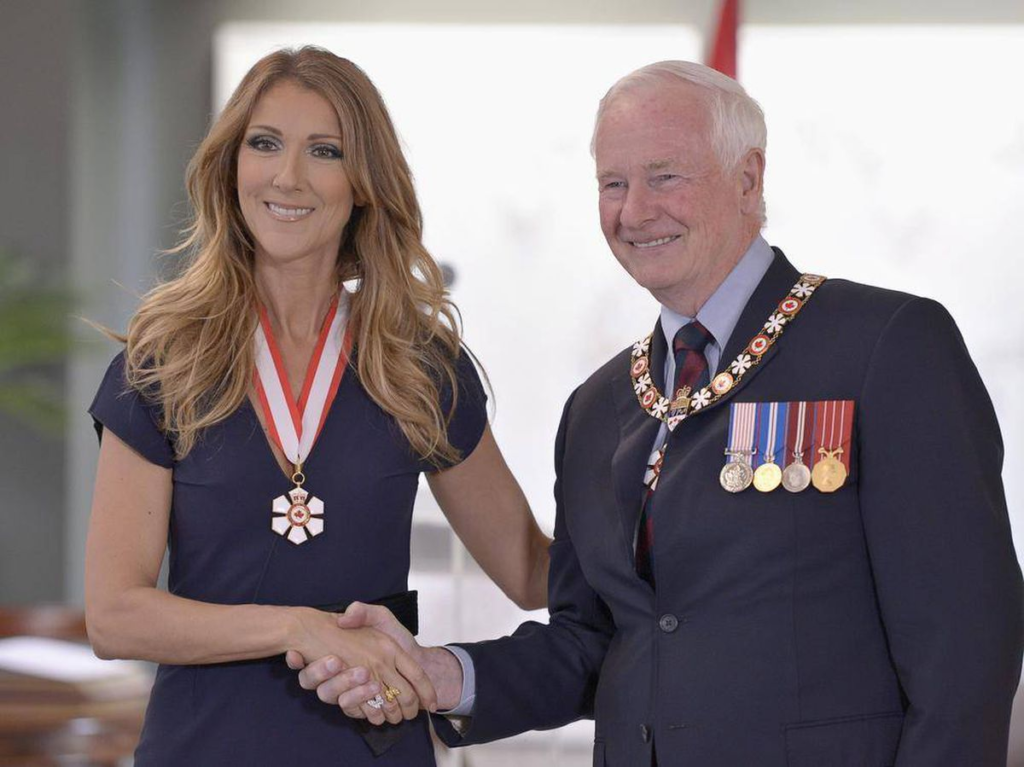
Awarded on: October 23, 2008
In conclusion, the Canadian Honours Award System is a way to recognize the exceptional achievements of Canadians. To be eligible, you must be a Canadian citizen or permanent resident, have made a significant contribution to your community or Canada, and be nominated by someone else.
For the Silo, Anna Kendrick.
Important Thoughts On Altruism
Humans possess a great depth of capacity when it comes to altruism. Again and again, we demonstrate our tendency to reach out when others are in distress. Cultivating these instincts is one of the ways in which we connect with our own humanity. Studies have indicated that altruism is not entirely innate. Environment plays a key role in the development of the qualities of altruism. Practicing this trait strengthens not only our own individual ability to extend hope and help to our fellow species, it allows us to explore more deeply our own inner kindness.
“Every man must decide whether he will walk in the light of creative altruism or in the darkness of destructive selfishness.” –Martin Luther King, Jr.
Mark Guglielmo had just finished an exhibition at Villa Victoria Center for the Arts in Boston, Massachusetts when he decided to emphasize what he felt was a missing ingredient in today’s society- altruism. Guglielmo’s work tries to emphasize this message by piecing together photo collages to form a larger image. For another show, he used photos from his time spent in Cuba. To complement the work, Guglielmo conducted interviews which were then incorporated in the exhibition. The particulars of the work involved thousands of photographs. Guglielmo captured detailed images of every nuance of a person, place, or thing. From these, he painstakingly compiled what he refers to as “a 1000-D version of reality.”
A natural storyteller, Guglielmo says the audio portion of his work was important to transport people to Cuba. Guglielmo witnessed the changes to the island nation. He decided to record the perspective of the Cuban people when it came to the changes to their relationship with the U.S. Guglielmo kept his conversations informal and allowed Cuban residents to drive them in order to keep them safe from government targeting for speaking out.
The conversations revealed the daily lives of Cubans often in the context of wealthy western tourists vacationing in the shadow of extreme poverty. Political tensions between the U.S. and Cuba have interfered with plans to show the work there.

Frank Juarez is the co-founder of the Randall Frank Contemporary Art Collection and project manager of the Randall Frank Artist Grant Program. Juarez says the Randall Frank collection began quite organically. Juarez and his high school and college friend Randall shared a lifelong affinity for art. When they wanted to work together, art was the common theme they shared. Together, they began a collection and strove to support artists from their area. In the early days, they worked under a tight budget, purchasing art quarterly and storing them in Randall’s home in Richmond, Virginia. The two began looking for opportunities to sponsor art events. Their first endeavor in this capacity was a mural project in Milwaukee’s Black Cat Alley. Randall Frank Contemporary Art Collection (RFCAC) hopes to one day create a public space where they can house their collected art and make it available to the public.
As they became more established, RFCAC decided the best, most direct way to support artists was through a grant program. RFCAC’s pilot program seeks to support artists in the Midwest and east coast regions of the U.S. The grant is presently privately funded. Juarez works in many capacities within the art world. He is a gallery director, curator, and educator. Randall works in the private sector as a chemist.
A Few Words to Keep in your Pocket: Soften your heart and open your mind to the possibilities of altruistic behavior.
For the Silo, Brainard Carey.
Featured image– Induction #1 by Tony Conrad (l) and Katrina by Rob Neilson (r) courtesy of Museum of Non-visible Art.
Why E-Cigarettes Might Encourage Youths To Try Tobacco But Help Adults Quit
Vaping, which is the act of using e-cigarettes, is more popular in young adults and it is feared to lure them into smoking. On the flip side, it is thought to help adults who are already smoking to quit. Confusing, right? Indeed, it is. All of this is attributed to the presence of nicotine in the vape juice. Apart from this, the use of e-cigarettes is also linked to some other effects like on user’s health.
Effects of E-Cigarettes on Youths

As hinted, vaping might lead youths into using tobacco products in the long run. First, the majority of the vaping juices on the market today contain strong nicotine, which causes addiction. Users claim that it has the best experience, but they do not know that it will affect them eventually.
Youths are also known to be experimental, and hence, they like to try different flavors at the same time. This introduces them to different types of nicotine levels and increases the chances of addiction. They also vape out of peer pressure and they may end up becoming chain vapers.


Eventually, youths might be tempted to smoke tobacco in search of more satisfaction. After all, it is believed that tobacco satisfies nicotine addiction in a better way than vapes.
What Youths Should Do
Young people need a lot of information to understand vaping in the best way. From this, they can know the best e juice to consume to avoid possibilities of addiction. They should know that peer pressure can lead them to making poor decisions that will cost them later.

Young people should also know that vaping has tons of health effects that they can avoid if they vape responsibly or quit. This means using products from reputable sellers and reading the labels to ensure that they are buying the right thing, which is low or medium nicotine vape juices.
How E-Cigarettes Helps Adults Quit Smoking
You have probably heard that vaping can help you to quit smoking. Many adults who are already tired of cigarettes or have health issues caused by tobacco wish they could quit, but the addiction is heavy. According to research, such adults can try vaping and gradually reduce the nicotine levels. E-juice ranges from strong nicotine levels to low and even zero nicotine.
Studies are showing that addiction to tobacco starts to reduce when one starts to vape cautiously. Many adults have finally stopped tobacco use by switching to vaping then other therapies like the use of gummies.
Is Vaping Good or Bad?
From the above insights, one might wonder whether vaping is good or bad. The truth is that it has its pros and cons, and this boils down to how people use it. As seen, youths tend to abuse it and they end up getting addicted or trying tobacco products. On the other hand, adults take advantage of e-cigarettes to quit smoking.

It is up to the users to make use of electronic cigarettes in the right way to enjoy the experience they give and also help them to quit tobacco. Whether you are a teen or an adult, you can achieve this. Good luck! For the Silo, Bailey Merton.
Featured image- E-puffer electronic hookah.
Families That Fight Over Inheritance
“People want to control things from the grave, not just throw a bunch of money in a beneficiary’s lap,” says family wealth guru John Pankauski, author of the new book, “Pankauski’s Trustee’s Guide: 10 Steps to Family Trustee Excellence.”
It’s their money so that’s their right.
But family members aren’t always crazy about how the deceased divided up the money or, if the inheritance was put into a trust, the restrictions that are placed on how the money is spent.
And often ill feelings among family members can bubble to the surface when money is at stake.
“I deal with sibling rivalries, petty jealousies and childhood grudges played out by adults who are decades older, but no more mature,” says Pankauski, founder of the Pankauski Law Firm (www.pankauskilawfirm.com), which specializes in trust and estate law. “It makes me think that part of my job is to be a wealth psychologist.”
Often, an inheritance isn’t doled out immediately. Instead, it’s placed in a trust with a trustee to oversee it, making decisions on when and how to distribute the money based on the terms of the trust.
In many situations, that works out fine. But in seriously dysfunctional families, that can make a bad situation borderline intolerable.
Pankauski says any number of factors can lead to family feuds or general disgruntlement over an inheritance. Here are just a few:
• Sense of entitlement. Many beneficiaries have a misplaced sense of entitlement to an inheritance. They just expect that mom or dad will leave them money or property. In their minds, it’s what they have coming to them. “The truth is, you can dispose of your property any way you want,” Pankauski says. “There is no right to an inheritance and just about anyone can be disinherited.”
So if people want to leave their money in a trust for a family pet, or bequeath everything to a neighbor, a mistress or a charity, they have every right to do so, assuming they are competent and know what they are doing. “It’s their money,” Pankauski says. “They can do with it as they wish.” Other than dealing with a spouse, there are almost no restrictions.
• The audacity of the trust. Family members often become frustrated and angry when they realize they inherited money, but it’s in a trust and there are strings attached. “The beneficiaries view trusts as handcuffs on their money,” Pankauski says. “A trust takes all those family members’ personal feelings and emotions, all that baggage, and adds money to create a financial stew into which the beneficiaries are thrown.”
Often, because beneficiaries don’t like it that a trustee gets to make decisions on when and how they get a portion of their inheritance, family members will seek counsel and try to “bust the trust.”
• An implied accusation of financial irresponsibility. At some point it may begin to dawn on beneficiaries that one reason the inheritance was placed in a trust is that the deceased didn’t view them as responsible with money. “That may seem insulting, but it doesn’t have to be,” Pankauski says. “Many would argue that most people are irresponsible with money, particularly a large sum of inherited money that appears out of the blue, much like winning a lottery.”
Sometimes at least a portion of the family animosity might be avoided by better planning when the will is being written and the trust created.
“When beneficiaries don’t get along,” Pankauski says, “it may make more sense to cut their financial ties by either creating multiple separate shares within the trust or creating separate trusts altogether.”
For the Silo, John Pankauski, LLP.
Managing A Team: Rules To Strengthen Cohesion!
Building a team is never easy, but it is one of the most important tasks within any company.
No matter how small or big a specific company is, some people do their best to deliver high-quality services and products, while working together.
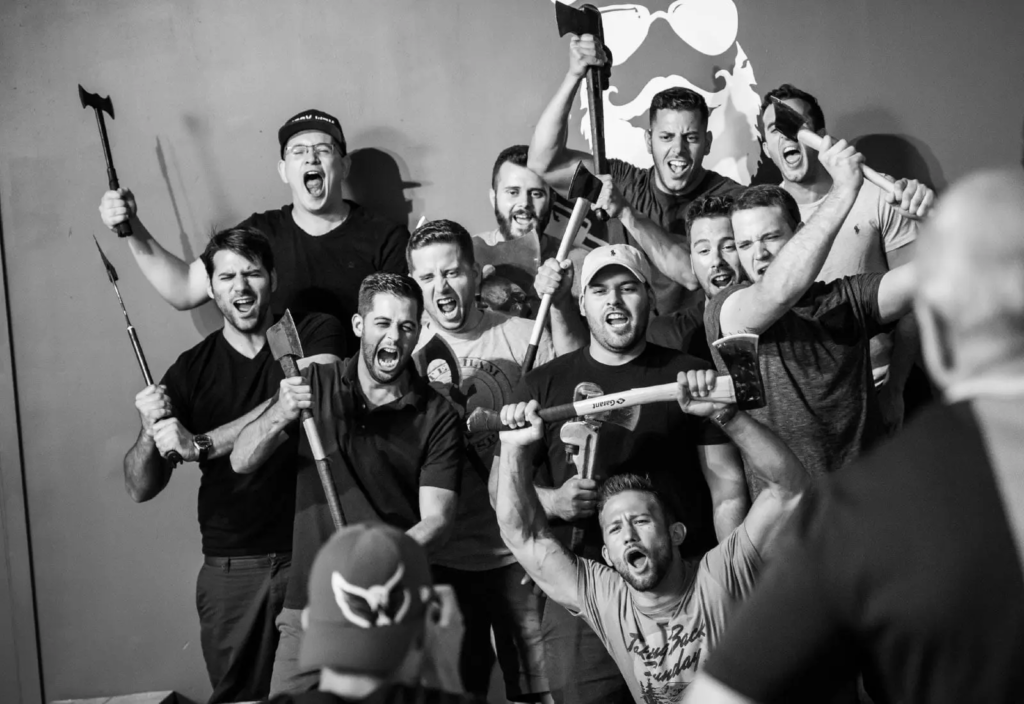
For great results, people need the right atmosphere, the right knowledge, and a great working atmosphere that enables them to learn and make mistakes (and learn from them), while at the same time they are experiencing different team challenges and great moments.

For a team to be successful and deliver, there must be a certain level of team cohesiveness, that enables people to be productive, effective, and communicate properly.
Not sure how some teams achieve this? Check the tips listed below to learn and implement.
Success Comes With Great Team Building
Teams that have fun, are teams that deliver. This is why team-building activities are so important.
Yes, some teams only need a weekly coffee to help them bond, while others need more frequent and more intense activities.

On the other hand, if you want to help your employees to bond further, while also they are exploring something new at a more durable pace than you should think about team building activities Montreal – team bonding experts know that the average person will spend 90,000 hours working throughout their life, which is why knowing co-workers is important, and no better way to get to know someone than through fun activity, such as cooking class, exploring the outdoors or doing some charity work.
For example, some teams are really into an active lifestyle and they need activities that will push them to work together and go for that medal (this is why competent sports are great team-building activities).
Establish The Rules
Every organization needs rules. Thanks to rules things happen. This is why teams should have their own rules, no matter how small or big they might be.
For a team to be great, they need essential rules that will help them stay on track.
If everyone knows the rules and follows them success is inevitable. For rules to be mindful, there must be goals.
Next to this have clear expectations and make sure that everyone understands their role within the team.
Establish Honest Communication
Communication is the key when it comes to working with people. Open and honest communication is something teat people appreciate and expect. This is why a clear line of communication is so important as much as having the right tools to keep everything communication-related in one place.
Be transparent as much as possible, without putting extra pressure on team members.
Ensuring communication creates a feeling of group cohesion. Why? This way everyone has a strong sense of belonging and inclusion.
Last But Not Least…
Do not forget to reward people. People love to see that their efforts are being appreciated and seen. This is why implementing any kind of reward and recognition system is important.
Have monthly work reviews, and reward the most productive team members as an example for doing great work. For the Silo, Bill Gordon. Featured image- Allez Up! Indoor climbing for team building.



